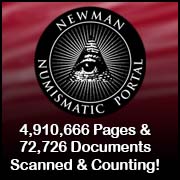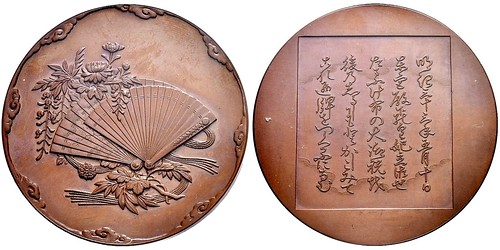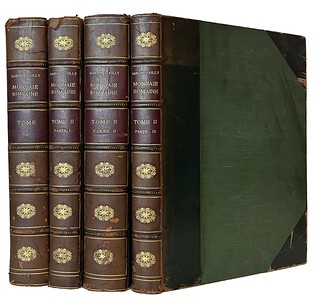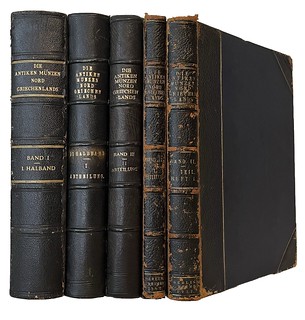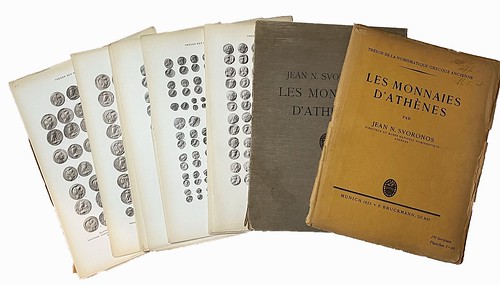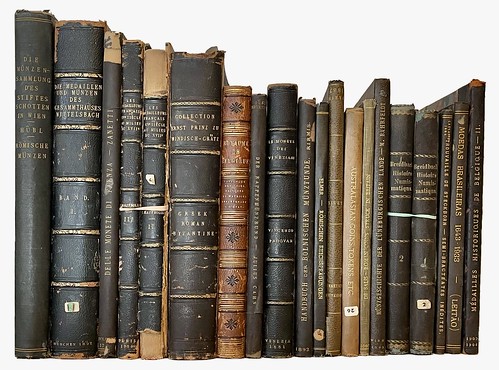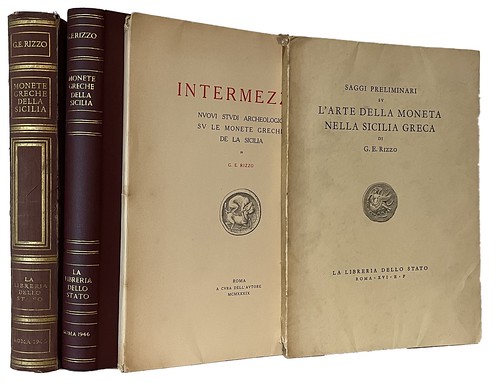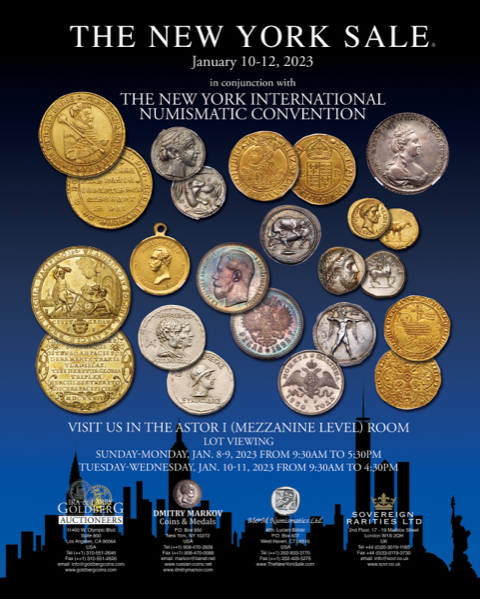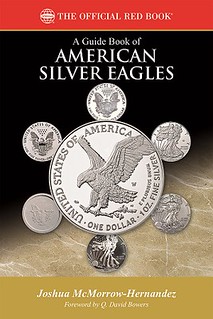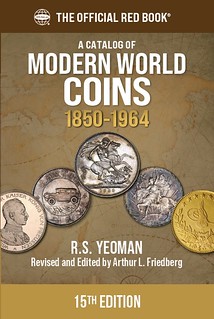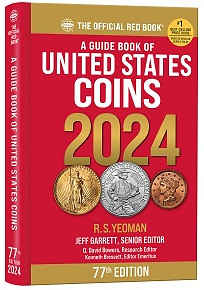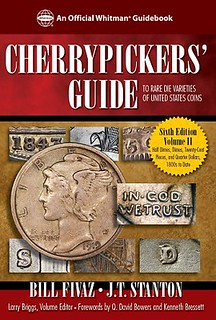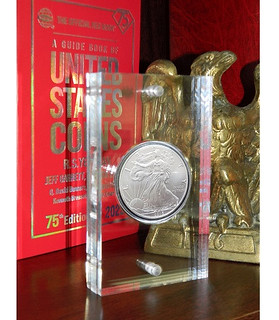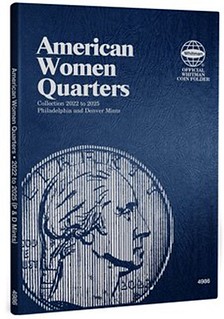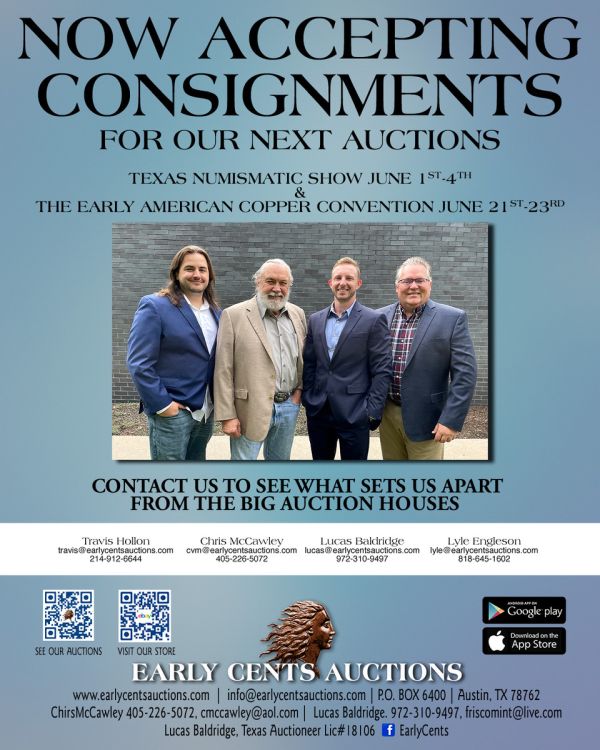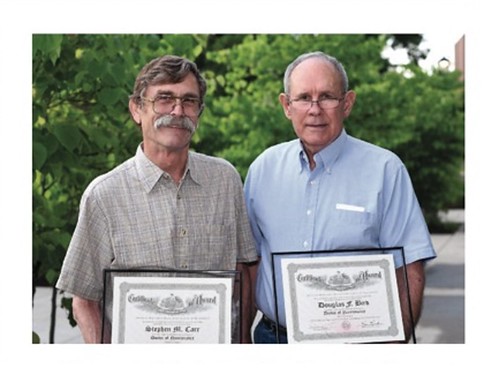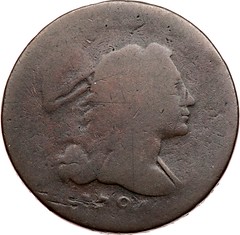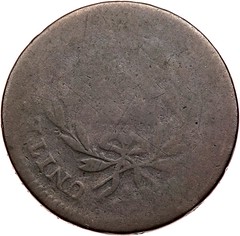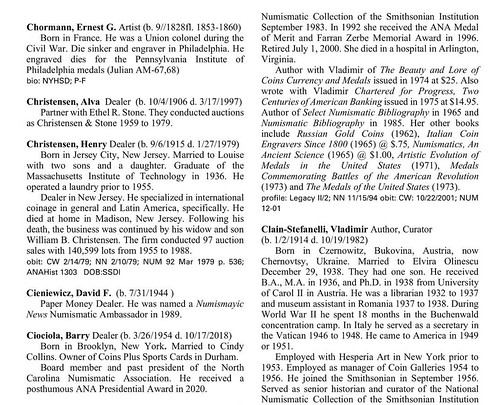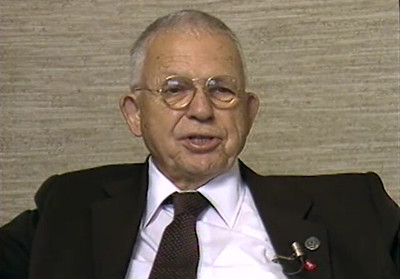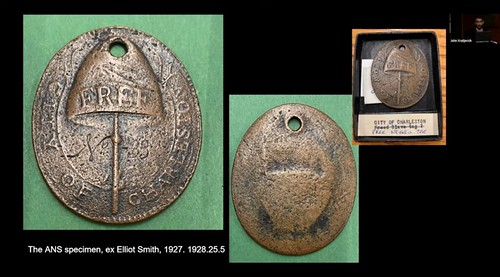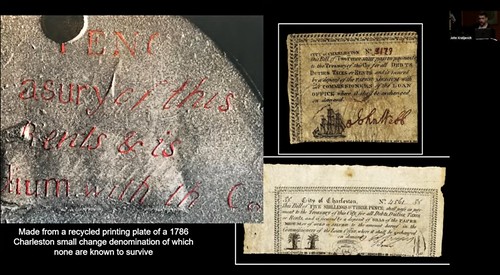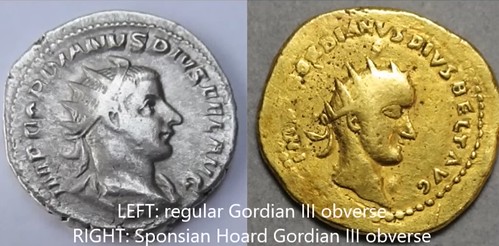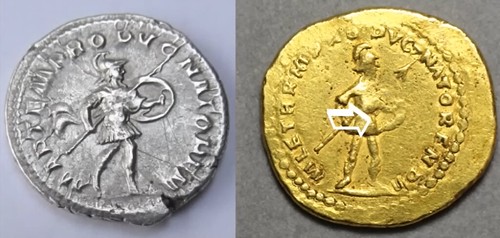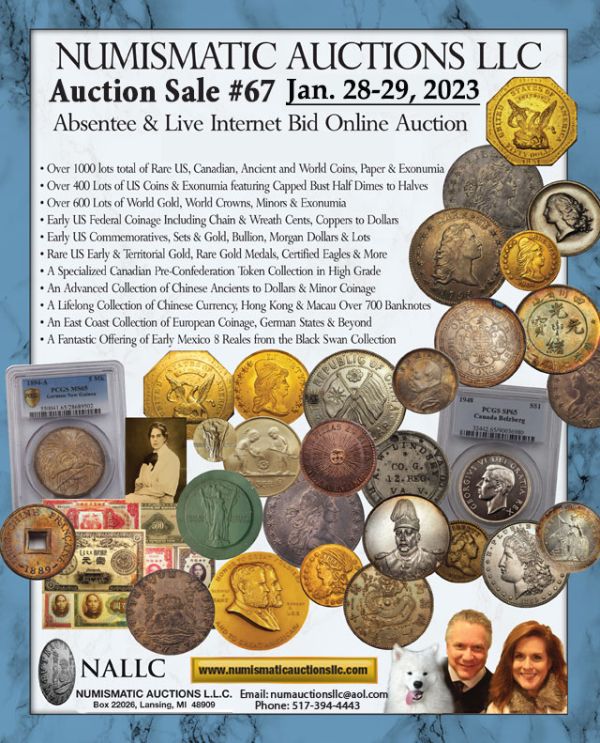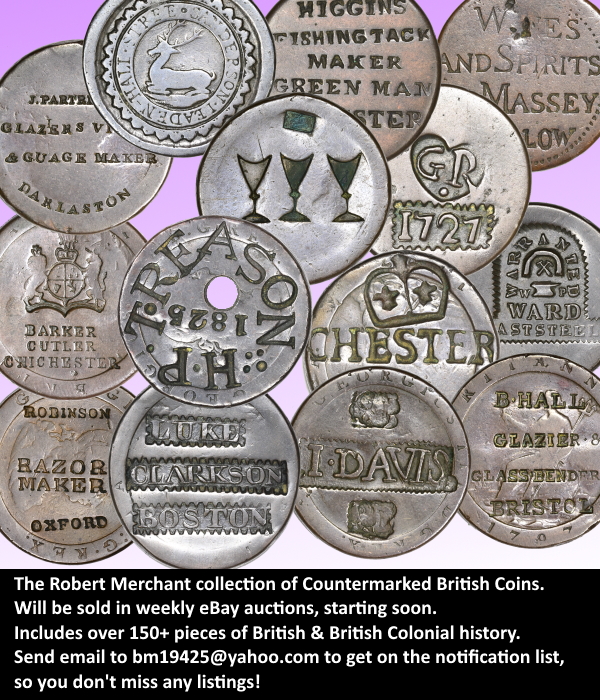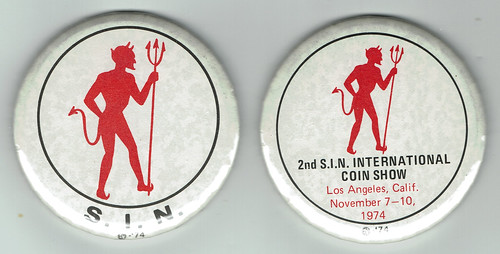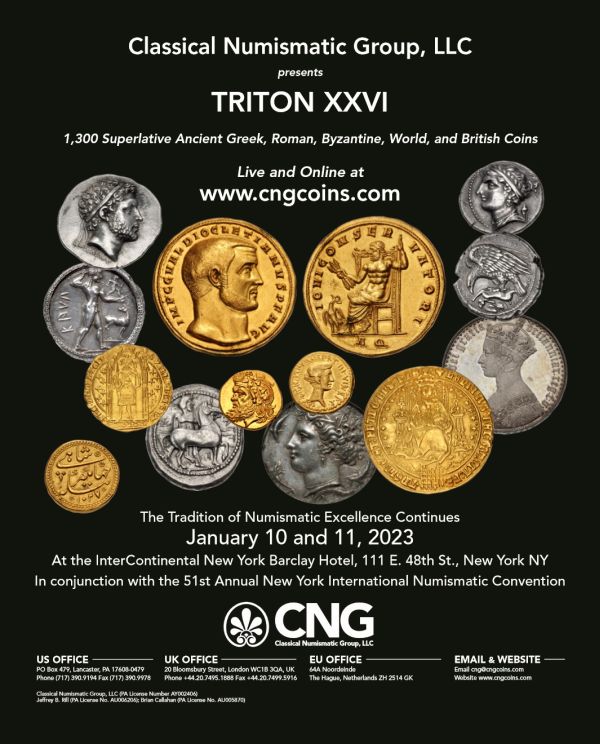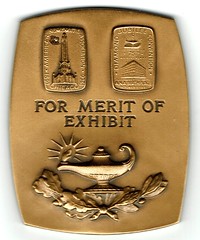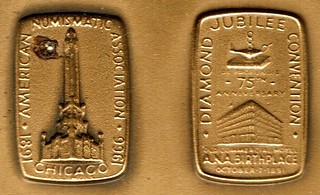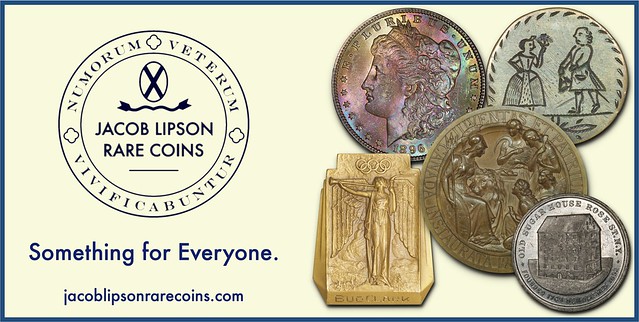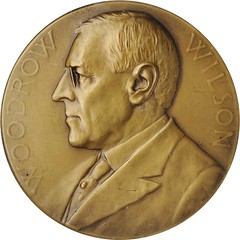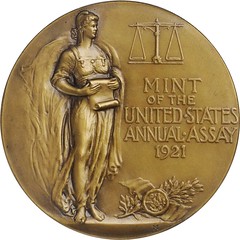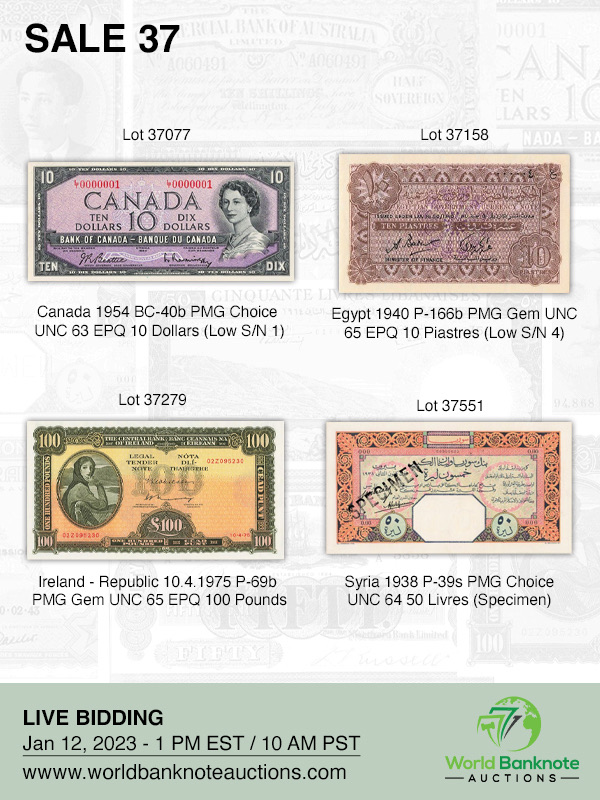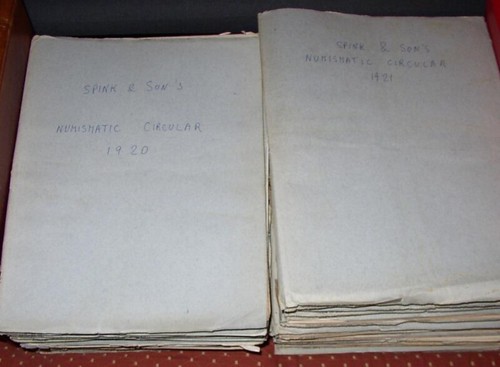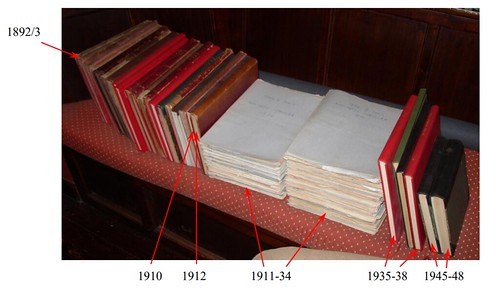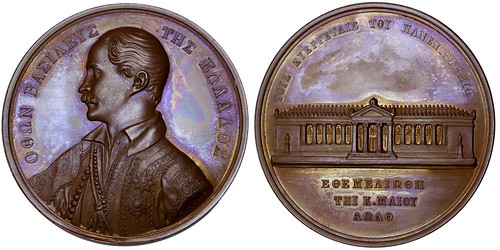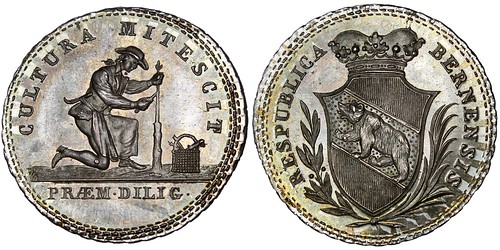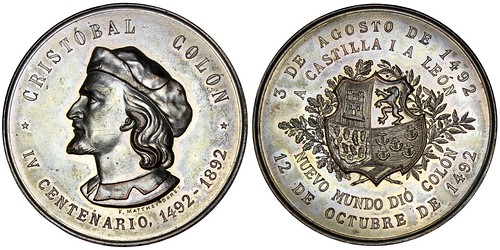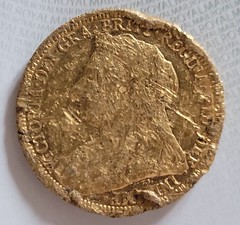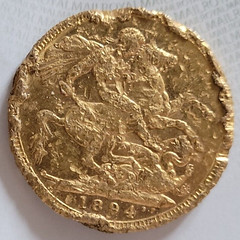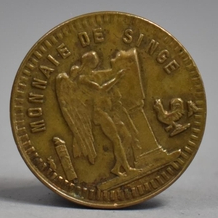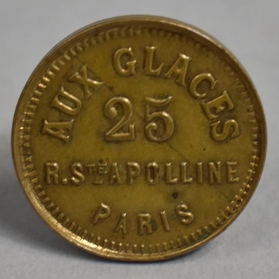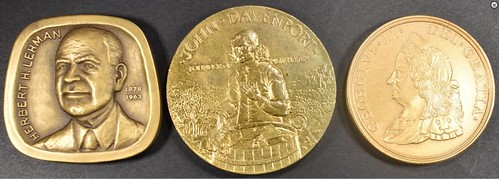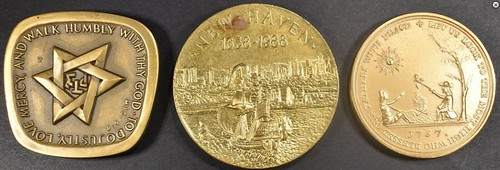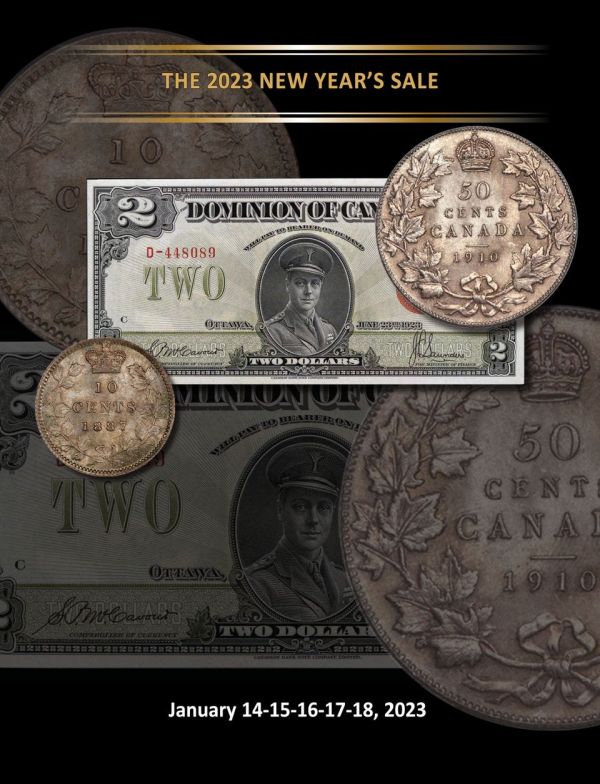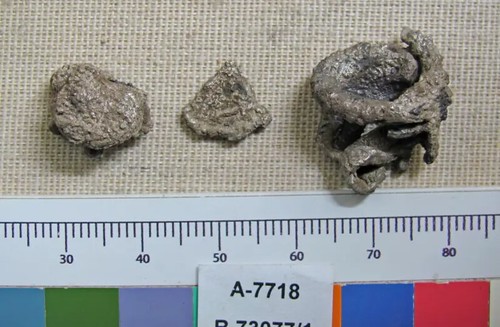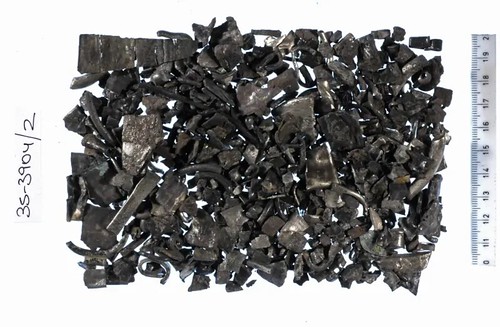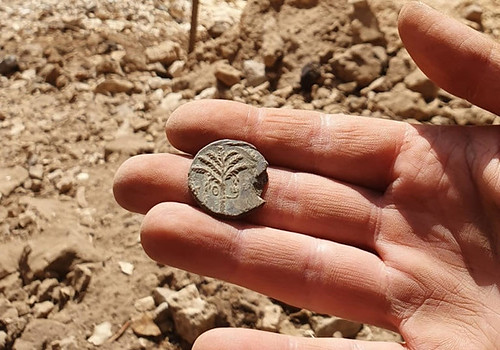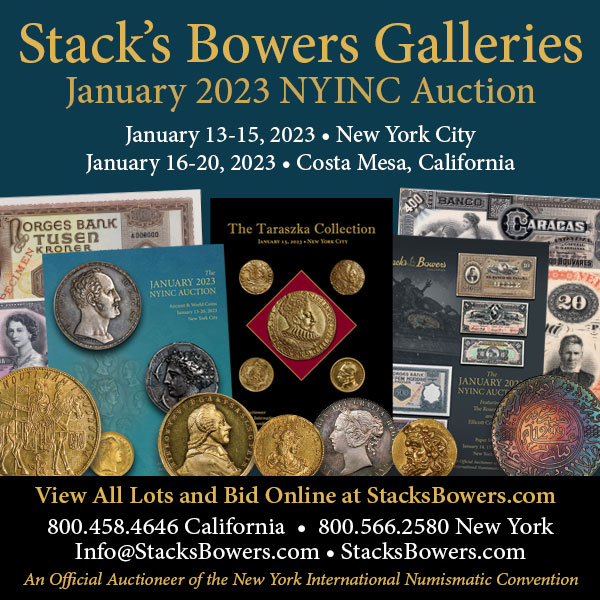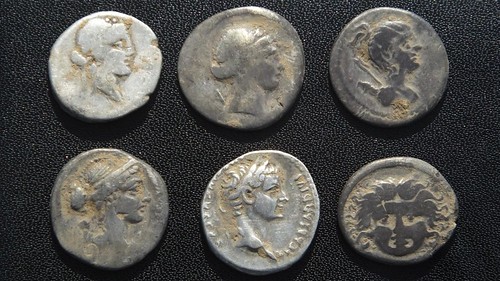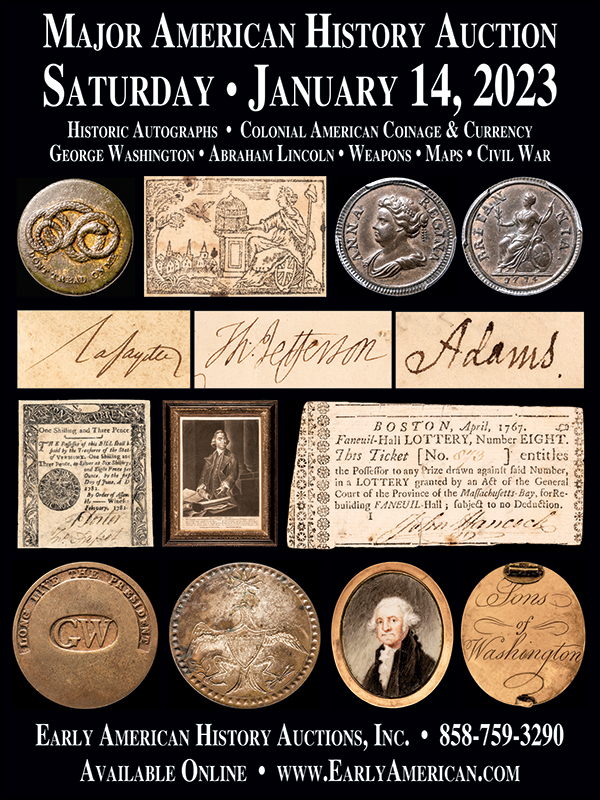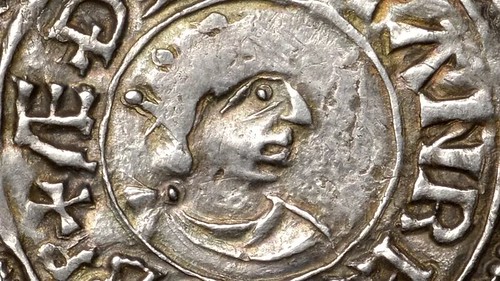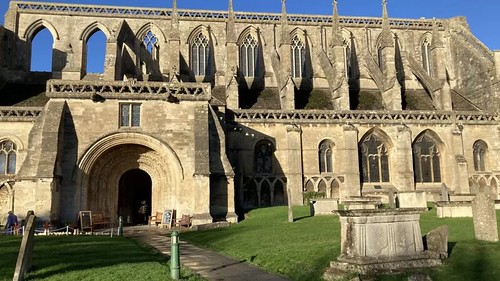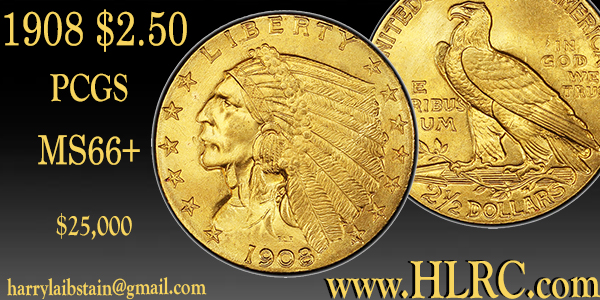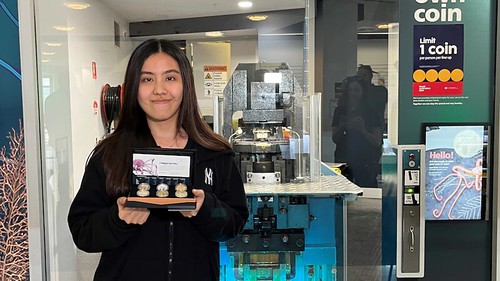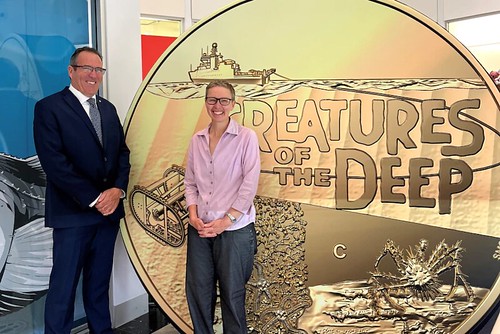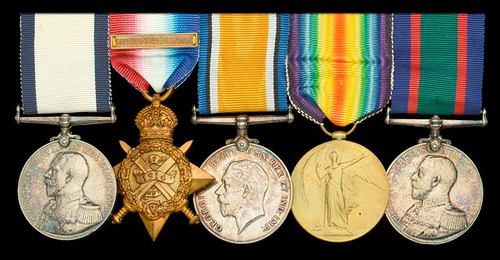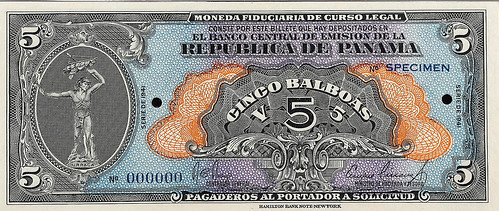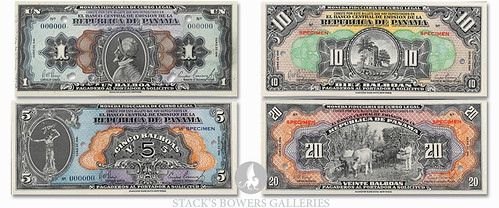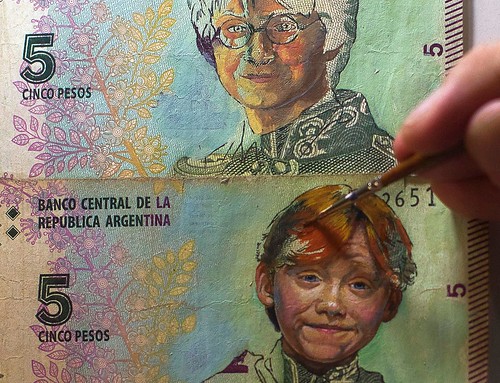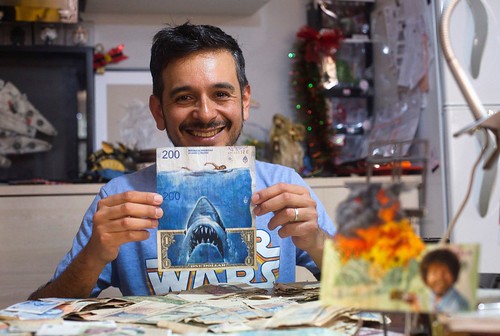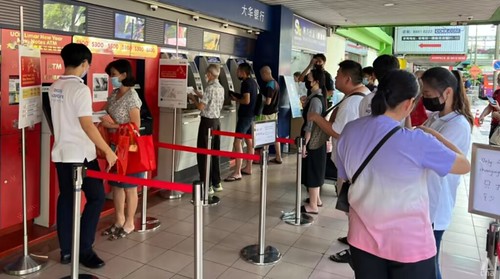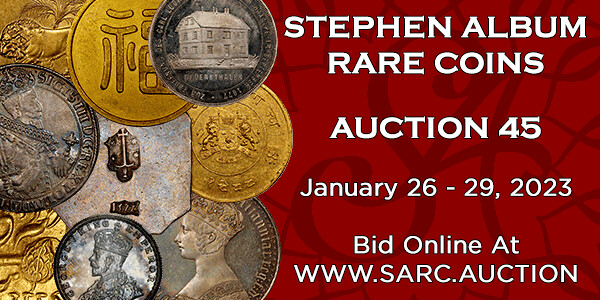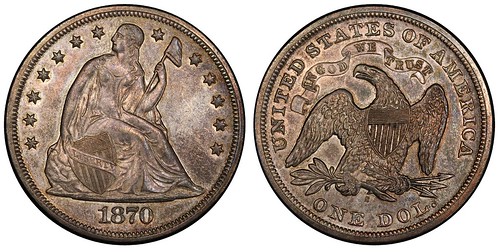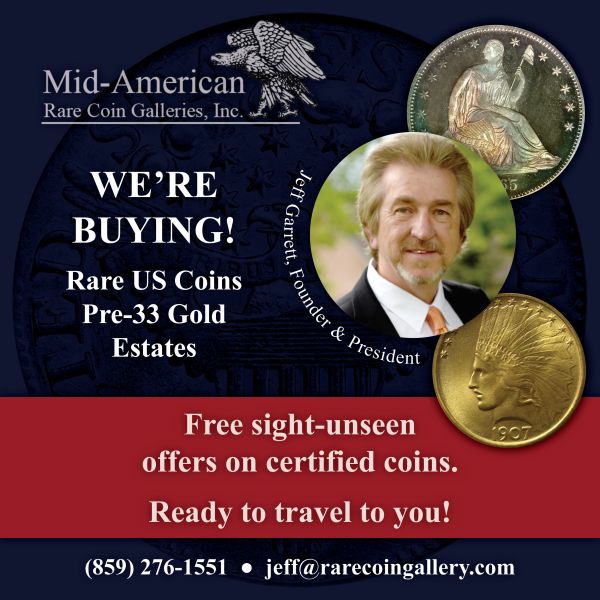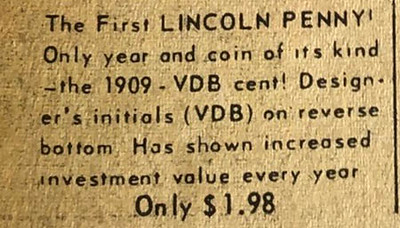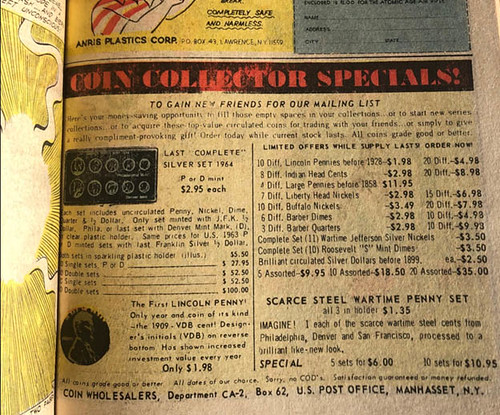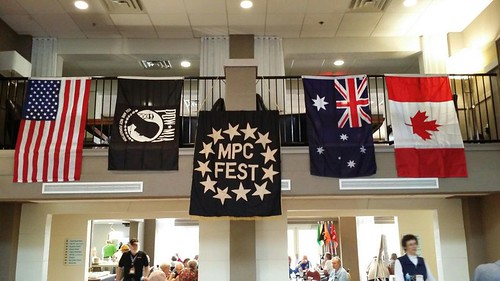
Visit our NBS Sponsors




About UsThe Numismatic Bibliomania Society is a non-profit association devoted to the study and enjoyment of numismatic literature. For more information please see our web site at coinbooks.org SubscriptionsThose wishing to become new E-Sylum subscribers (or wishing to Unsubscribe) can go to the following web page link MembershipThere is a membership application available on the web site Membership Application To join, print the application and return it with your check to the address printed on the application. Print/Digital membership is $40 to addresses in the U.S., and $60 elsewhere. A digital-only membership is available for $25. For those without web access, write to: Charles Heck, Treasurer AsylumFor Asylum mailing address changes and other membership questions, contact Chuck at this email address: treasurer@coinbooks.org SubmissionsTo submit items for publication in The E-Sylum, write to the Editor at this address: whomren@gmail.com BUY THE BOOK BEFORE THE COINSale CalendarWatch here for updates! |
- WAYNE'S WORDS: THE E-SYLUM JANUARY 8, 2023
- CHARLES DAVIS AT 2023 NYINC
- WHITMAN PUBLISHING'S 2023 NEW BOOKS
- DOUGLAS FRANCIS BIRD (1944-2023)
- AMERICAN NUMISMATIC BIOGRAPHIES REVISED
- NEWMAN PORTAL ADDS CCAC ANNUAL REPORTS
- VIDEO: JOHN JAY PITTMAN
- VIDEO: SLAVE BADGES, VERMONT COPPERS, SPONSIAN
- AUDIO: MCDOWELL, SCHENKMAN
- MORE ON PAULINE PAULING EMMETT
- MORE ON MEDALS WITH PRECIOUS STONES
- NOTES FROM E-SYLUM READERS: JANUARY 8, 2023
- QUERY: ALBERT LEVITT AND THE 1921 ASSAY COMMISSION
- VOCABULARY TERM: METAL CLEANING
- FINDING AND BINDING SPINK'S NUMISMATIC CIRCULAR
- BRITISH NUMISMATIC SOCIETY MEETING AT NYINC
- 2024 AIA/SCS CALL FOR PAPERS
- NUMISMAGRAM SELECTIONS: JANUARY 8, 2023
- NUMISMATIC NUGGETS: JANUARY 8, 2023
- USE OF SILVER AS MONEY IN ISRAEL
- BAR KOCHBA REVOLT COIN FOUND IN ISRAEL
- SHROPSHIRE HOARD DECLARED TREASURE
- ATHELSTAN MUSEUM BUYS KING'S COIN
- THE MYSTERY OF THE RED QUARTERS
- STUDENT STRIKES FIRST 2023 AUSTRALIAN COIN
- GALLIPOLI CONSPICUOUS GALLANTRY MEDAL
- BIDEN AWARDS PRESIDENTIAL CITIZENS MEDALS
- THE
ARIAS ISSUE
PANAMANIAN BANKNOTES - ARGENTINE ARTIST PAINTS ON BANK NOTES
- 2023 CHINESE NEW YEAR BANKNOTES
- LOOSE CHANGE: JANUARY 8, 2023
- ABOUT THOSE COIN ADS IN COMIC BOOKS
- FEATURED WEBSITE: MPC FEST
Click here to read the thin version on the web
Click here to subscribe
Click here to access the complete archive
To comment or submit articles, reply to whomren@gmail.com
Content presented in The E-Sylum is not necessarily researched or independently fact-checked, and views expressed do not necessarily represent those of the Numismatic Bibliomania Society.
WAYNE'S WORDS: THE E-SYLUM JANUARY 8, 2023
 New subscribers this week include:
Harold Davis, courtesy of Wayne Davis; and
the Redcliffe Numismatic Society.
Welcome aboard!
New subscribers this week include:
Harold Davis, courtesy of Wayne Davis; and
the Redcliffe Numismatic Society.
Welcome aboard!
Thank you for reading The E-Sylum. If you enjoy it, please send me the email addresses of friends you think may enjoy it as well and I'll send them a subscription. Contact me at whomren@gmail.com anytime regarding your subscription, or questions, comments or suggestions about our content.
This week we open with numismatic literature at NYINC, several new book announcements, updates from the Newman Numismatic Portal, videos, podcasts and more.
Other topics this week include slave badges, Vermont coppers, medals with precious stones, John Jay Pittman, Chris McDowell, Dave Schenkman, Albert Levitt, metal cleaning, coin finds in Israel and elsewhere, the Conspicuous Gallantry Medal, the Presidential Citizens Medal, coin ads in comic books, Chinese New Year notes and the first 2023 coins struck in Australia.
To learn more about medals and money in Black America, the Numismatic Book Shop, the Citizens Coinage Advisory Committee, Numisma, Spink's Numismatic Circular, the War of 1812 in American and British medals, King Athelstan, the mystery of the red quarters, "Arias issue" banknotes of Panama, mint mark collecting, MPC Fest, and vibratory bowls, read on. Have a great week, everyone!
Wayne Homren
Editor, The E-Sylum
CHARLES DAVIS AT 2023 NYINC
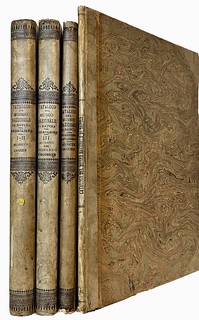 Numismatic literature dealer Charlie Davis writes:
Numismatic literature dealer Charlie Davis writes:
"I will have a table (No. 906) at the New York International Show, New York InterContinental Barclay, 111 E 48th Street, New York, January 12-15."
Charlie sent these photos of stock recently purchased from a European dealer that will be available at the show. -Editor
For more information on the show, see:
https://www.nyinc.info/
WHITMAN PUBLISHING'S 2023 NEW BOOKS
Whitman Publishing has been busy behind the scenes and is planning a busy 2023 publishing season. This press release details the firm's plans for the year. Watch The E-Sylum for details as each new book makes its debut. -Editor
Whitman Publishing announces a slate of new books and hobby supplies that will be available in 2023. The lineup includes titles on U.S. and world coins, tokens and medals, numismatic history, and memoirs, as well as archival-quality Whitman and H.E. Harris folders, albums, and other display and storage products.
Founded in 1916, Whitman is the world's leading producer of numismatic reference books, supplies, and products to display and store coins and paper money. The company will release new folders and albums for the American Women quarters and other United States Mint coins, and continues its Glorifier Series of magnetic-closure acrylic display cases.
Several volumes of Whitman's best-selling Bowers Series
will be updated in new editions in 2023. These include guide books on Morgan silver dollars; Liberty Seated silver coins; the dimes, quarters, and half dollars designed by Charles E. Barber; Franklin and Kennedy half dollars; Lincoln cents; and $20 double eagle gold coins.
The newest volume in the Bowers Series (no. 27), the Guide Book of American Silver Eagles, by Joshua McMorrow-Hernandez, is now available.
The 15th edition of R.S. Yeoman's Catalog of Modern World Coins, 1850–1964, has been updated and fully revised by editor Arthur L. Friedberg and a team of pricing specialists from around the world.
The Guide Book of United States Coins and the Handbook of United States Coins—the hobby's best-selling Red Book
and Blue Book
—will be released this spring in their 77th and 81st editions, respectively.
The 9th edition of Mega Red, the 1,504-page deluxe version of the Red Book, features a detailed coin-by-coin study of quarter eagle gold coins, along with its usual expanded coverage of every U.S. coin series.
The latest Cherrypickers' Guide will debut in 2023—the 6th edition, volume II, covering die varieties of half dimes, dimes, twenty-cent pieces, and quarter dollars, 1800s to date.
The 2nd edition of James A. Haxby's Guide Book of Canadian Coins and Tokens will roll out for the holiday season. This follows on Harvey B. Richer's 100 Greatest Canadian Coins and Tokens, published in 2022.
John Kraljevich's Freedom Will Be Ours: Medals and Money in Black America is an exploration of the experience of Black Americans as commemorated by, described by, or related to numismatic material culture—tokens, medals, coins, paper money, privately issued scrip—and tangential but important items such as slave tags and military awards.
Famed collector and antiquities dealer Kenneth W. Rendell, a founding member of the Rittenhouse Society and a contemporary of Q. David Bowers, will share his memoirs in Safeguarding History: Trailblazing Adventures Inside the Worlds of Collecting and Forging History.
In the world of stamp-collecting, H.E. Harris & Co., a Whitman subsidiary, will publish a number of new philatelic supplements in 2023. Its annual US/BNA Postage Stamp Catalog will be available in November. Billed as America's Best-Selling Stamp Price Guide,
US/BNA covers stamps of the United States and U.S. possessions, the United Nations, and British North America (Canada and its provinces).
Whitman Publishing is the Official Supplier of the American Numismatic Association. As a benefit of membership in the ANA, members can borrow Whitman books for free from the Association's Dwight N. Manley Numismatic Library, and also receive 10% off all Whitman purchases. Details are at www.money.org.
More detailed information will be released about individual new books and products as their release dates approach.
There's a lot to be excited about here, in both the new and updated titles. With the demise and breakup of the Krause Standard Catalog business there has been an opportunity for other publishers to fill the gap in the market. CDN Publishing recently acquired and expanded The Banknote Book to cover world paper money, and now Whitman is stepping up to address world coin prices with a 15th edition of Yeoman's Catalog of Modern World Coins, 1850–1964.
The 14th edition appeared 15 years ago in 2008; the 13th edition came out 40 years ago in 1983. What will the new 15th edition offer? The world's a big place - what to leave in, what to leave out? The good folks at Whitman wrestle with those issues daily in updating the Red Book. Will the "Brown Book" become an annual production? Is it a stepping stone to a "Mega" version, a phone-book-sized deluxe edition like the old Krause catalogs? Can any physical print product keep up with the fast-changing numismatic marketplace? Well, the Red Book has survived and thrives in the internet age, showing that there is indeed a niche for such a publication. We'll look forward to future developments.
John Kraljevich's new book will be groundbreaking - nothing like it has been published before, certainly not in one handy volume. Such works tend to spark new waves of collectors, and perhaps this one will draw a younger and more diverse demographic to the hobby. That will require marketing it beyond the usual numismatic outlets, but Whitman is up to the task. The problem will be that much of the material discussed is quite rare, and we may see prices rising without a large influx of collectors.
Ken Rendell's book could offer an interesting look into the history of both numismatics and the autograph and rare document fields, where he migrated after early dealings in coins.
Thanks to Whitman for this preview of the coming year; we'll look forward to more details on each and every book. -Editor
To read the complete article, see:
New books and hobby supplies from Whitman Publishing in 2023
(https://mintnewsblog.com/new-books-and-hobby-supplies-from-whitman-publishing-in-2023/)
To read earlier E-Sylum articles, see:
NEW BOOK: 'A CATALOG OF MODERN WORLD COINS, 1850-1964', 14TH EDITION
(https://www.coinbooks.org/esylum_v11n06a03.html)
REVIEW: 'A CATALOG OF MODERN WORLD COINS, 1850-1964', 14TH EDITION
(https://www.coinbooks.org/esylum_v11n07a07.html)
DOUGLAS FRANCIS BIRD (1944-2023)
E-Sylum Feature Writer and American Numismatic Biographies author Pete Smith submitted this article on early American copper specialist Doug Bird, who passed away this weekend. Thank you. Sorry to hear the news. The first image was added courtesy Al Boka via Mark Borckardt. -Editor
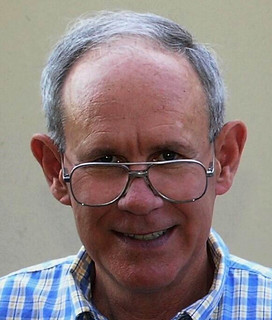 An email message from Chuck Heck on Saturday, January 7, had the notice that long-time EAC
dealer Doug Bird had died on Thursday, January 5, 2023.
An email message from Chuck Heck on Saturday, January 7, had the notice that long-time EAC
dealer Doug Bird had died on Thursday, January 5, 2023.
Doug Bird was born on June 25, 1944, in Boston, Massachusetts. He received a BBA from Loyola University in Los Angeles in 1966. The Army called him to service during 1967-68 including a thirteen-month tour in Vietnam. He was married with a son, Doug Jr.
Doug began collecting coins in 1953 and joined EAC in 1973. He was LM-2763 with the ANA. He was employed in the real world as director of human resources 1969 to 1982. During that time, he was a part-time coin dealer. He made coin dealing a full-time business in 1982 specializing in early copper and type coins.
In the 1980's, McLauglin and Robinson were conducting coin auctions out east. Doug Bird and Gary M. Ruttenburg had an affiliated operation out west.
In 2001, Doug and Steve Carr began teaching a popular class on early copper coins at the ANA
Summer Seminar in Colorado Springs. They also conducted seminars on grading and counterfeit
detection at the EAC conventions. Many of the current generation of collectors got a solid
foundation in the hobby through these courses. The two were presented with Doctor of
Numismatics
degrees at Summer Seminar in 2015.
Bird consigned 179 pieces to the Goldbergs for auction on February 16, 2020. These were better quality coins that he set aside and never offered with inventory.
At the time of the sale, ANA president Steve Ellsworth presented Doug with an ANA Presidential Award. Doug helped establish and sponsored the ANA Early American Copper Coin Project.
I recall an incident with Doug that I found amusing at the time. I had stopped being a player in the large cent game about twenty years earlier. I returned to the show circuit in 2005 as the employee of a local coin dealer. Another employee was a married woman well known in the copper field.
One evening after the show, we went to dinner in a large dining room filled with other coin
dealers. Doug spotted us from across the room and stood up and eyeballed us as we went to our
table. I don't know if he was thinking What is she doing with him?
or What is he doing with
her?' His interest and curiosity was so obvious that I found it amusing.
When I was active in EAC forty years ago, many of my friends in the hobby were about my age. It comes as no surprise that they are all older now. Or perhaps I should say, those who have survived are all older now. Doug Bird was one day younger than me. The death of friends in the hobby hits us hard as we recognize their mortality and our own.
Mark Borckardt writes:
"I don't remember when I met Doug Bird but I am sure it was close to 40 years ago, perhaps at the first Robinson Brown large cent auction in 1986. He and I were connected in the June 1973 issue of the EAC publication Penny-Wise that carried both our names as new members of Early American Coppers. I also don't know when I last saw him but I imagine it was a few years ago as his health prevented travel to conventions. What I do know is that I will miss my friend. Rest in Peace, Doug."
Chuck Heck writes:
"We have lost another GIANT. An honest and fun loving GIANT who was always a CLASS act -- Doug Bird.
"You frequently hear people say that you should never let an opportunity pass you by when assembling your collection. Personally, I have always felt the opposite way. I suppose that I have simply been lucky because I have had second and third chances.
"In January 2005 Wes Rasmussen sold his large cent collection through Heritage at the FUN Show in Florida. Fortunately, I won several coins at the auction. The day after the sale I usually like to review the winning prices to see if something sold cheaply. Bingo -- lot #3021 -- the exceedingly rare 1794 NC-4 sold for $6000. What??? Only $6000??? I thought the coin sold cheaply. The winning bidder was Doug Bird. I immediately called Bird Man (what he was affectionately called by copper collectors) but I only got his voicemail. My message was simple -- "Hi Doug, this is Chuck, nothing special, no rush -- call me back whenever you can."
"About an hour later Doug called me and when I answered the phone he sang (yes, he sang) "I know what you waaant" -- to the tune of " Nya, Nya, NyaNyan, Ya." Using the same tune I responded -- "Nooo You Don't." To which he continued to sing -- "Yes I doooo."
"Frustrated, I sternly replied without singing -- "OK! Stop this insanity! What do I want? He said -- "You want the NC-4." Stunned at his answer, I said -- "How in hell did you know that?" Bird Man said -- "It's the only coin that went cheap!"
"He charged me one bid over his.
"I just spoke with Doug Jr. The family has come to terms with Doug's passing. There will be no memorial or public service, just a private family service. However Doug Jr. and his wife Melissa would love to hear any stories that you might enjoy sharing. You can email him at: birdlas@gmail.com.
"Personal comment: The email address -- birdlas@gmail.com -- get it??? Doug (an only child) and Melissa have 2 daughters; "birdlas" = "last bird." Like Father, Like Son!"
AMERICAN NUMISMATIC BIOGRAPHIES REVISED
Speaking of mortality, Pete Smith submitted this call for updates to his American Numismatic Biographies book. None of us is getting any younger, and now is a great time to record numismatist biographical details. -Editor
I suspect many E-Sylum readers have biographies on ANB. I invite readers to look themselves up and report back to me if their information is correct or should be revised.
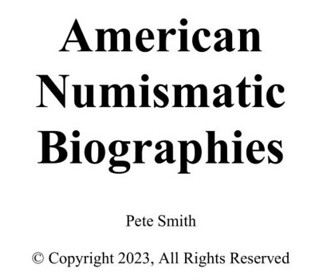 In the last six months of 2022, I added hundreds of new names to American Numismatic
Biographies and made four thousand changes. The 2023 revised version may be found on the
Newman Numismatic Portal at
https://nnp.wustl.edu/library/book/304.
In the last six months of 2022, I added hundreds of new names to American Numismatic
Biographies and made four thousand changes. The 2023 revised version may be found on the
Newman Numismatic Portal at
https://nnp.wustl.edu/library/book/304.
Many of the listings are incomplete placeholder
listings waiting for more information to be
added. I am not looking for promotional hype but rather solid facts.
Individual entries from ANB are extracted and presented in the People
section of the Newman
Numismatic Portal. It will take a while for the 2022 changes to be posted.
I look forward to hearing from readers.
Please, please, do contribute to this important and monumental work. It's well worth the time to look up your entry, and those of your fellow numismatists. Along the way you'll discover a myriad of interesting facts about collectors, dealers, Mint officials, sculptors, engravers and just about anyone deeply involved in American numismatics from local clubs to the national level.
Meet vignette engravers, foreign exchange brokers, club presidents, book authors, millionaires, billionaires, "just plain collectors," members of the Assay Commission and the Commission of Fine Arts, the proprietor of the Numismatic Book Shop, and collectors who were expelled from the ANA, or were charged with bigamy. -Editor
To look for entries, see:
American Numismatic Biographies
(https://nnp.wustl.edu/library/book/304)
THE BOOK BAZARRE
NEWMAN PORTAL ADDS CCAC ANNUAL REPORTS
The latest addition to the Newman Numismatic Portal is the 2022 CCAC Annual Report. Project Coordinator Len Augsburger provided the following background. -Editor
CCAC Annual Reports
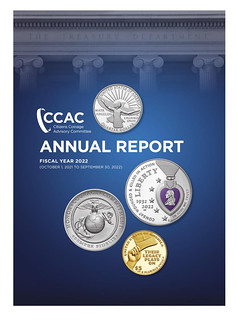 The 2022 fiscal year (October 1, 2021 – September 3, 2022) annual report of the Citizens Coinage Advisory Committee was recently issued, and the greatly expanded format, initiated in 2020, once again gives a full picture of this organization that helps guide the artistic direction of the U.S. Mint. Meetings and candidate designs are thoroughly detailed, in addition to useful appendices that provide committee minutes, committee member bios, and a historical census of the membership.
The 2022 fiscal year (October 1, 2021 – September 3, 2022) annual report of the Citizens Coinage Advisory Committee was recently issued, and the greatly expanded format, initiated in 2020, once again gives a full picture of this organization that helps guide the artistic direction of the U.S. Mint. Meetings and candidate designs are thoroughly detailed, in addition to useful appendices that provide committee minutes, committee member bios, and a historical census of the membership.
These reports will be an invaluable guide to numismatic historians of the future seeking insights into the development of today's Mint products. Such information is often challenging to extract from 19th and 20th century archives, and the CCAC is to be acknowledged for carefully documenting their work in this area.
Link to CCAC Home Page:
https://www.ccac.gov/
Link to CCAC Annual Reports on Newman Portal:
https://nnp.wustl.edu/library/publisherdetail/511734
VIDEO: JOHN JAY PITTMAN
The David Lisot Video Library on the Newman Numismatic Portal can be found at:
https://nnp.wustl.edu/library/multimediadetail/522852
We highlight one of his videos each week in The E-Sylum. Here's one from 1986 with collector and ANA officer John Jay Pittman. -Editor
ANA Numismatic Personality: John Jay Pittman
I had the pleasure of meeting John a few times at ANA conventions, sometimes when he was setting up or taking down an exhibit. He was quite happy to show his treasures and talk numismatics.
In this interview he talks about meeting ANA Life Member #4 George Bauer in the 1930s, who became his numismatic mentor. Bauer in turn introduced him to dealers Norman Schultz of Salt Lake City, and B. Max Mehl of Texas.
Pittman met John F. Jones, one of the first 100 members of the ANA. He greatly admired collector Emery May Norweb and dealer Abe Kosoff. He attended the legendary Grinnell paper money sale and the equally legendary King Farouk "sale of a lifetime".
He "fell in love" with Canadian coins in 1936 and also collected Mexican and British coins.
Amazing, must-watch video interview. -Editor
To watch the complete video, see:
https://nnp.wustl.edu/library/book/557353
VIDEO: SLAVE BADGES, VERMONT COPPERS, SPONSIAN
In the age of YouTube and Zoom, numismatic videos are far more common and available today than back in the 1980s when David Lisot did his pioneering videography. Here are just a few to consider watching this week. -Editor
John Kraljevich, Slave Badges and Dog Tags
2022 Stack Family Lecture on American Numismatics: Slave Badges and Dog Tags: Personal Artifacts of Enslaved and Free African-Americans Before 1865
In the whole realm of material culture, very few objects can be unquestionably ascribed to the possession of African-Americans before 1865. However, in spite of the overall rarity of these sorts of items, two significant groups of intensely personal objects can be classed as numismatic.
From 1783 to 1865, Charleston, South Carolina officially produced identification badges for African-Americans, first exclusively for free persons, then exclusively for enslaved Americans who were to be hired out by their masters. Made of metal and intended for personal display, the Charleston badges are at least loosely similar to the identification discs or dog tags
made for Black men who fought for the Union in the Civil War and small numbers of formerly enslaved African-Americans, mostly in Washington, DC. Join ANS Fellow John Kraljevich, a numismatist and historian, for an exploration of these items, their lessons, and broader themes of African-American history.
On Saturday, December 10, 2022, ANS Fellow John Kraljevich presented the first Stack Family Lecture on American Numismatics, entitled, Slave Badges and Dog Tags: Personal Artifacts of Enslaved and Free African-Americans Before 1865.
Fascinating - well worth watching.
-Editor
To watch, see:
Slave Badges and Dog Tags: Personal Artifacts of Enslaved and Free African-Americans Before 1865
(https://www.youtube.com/watch?v=eECKuP--xzw)
The History of Vermont Copper Coins, 1785–1788
Jesse Kraft, Resolute Americana Curator of American Numismatics, American Numismatic Society
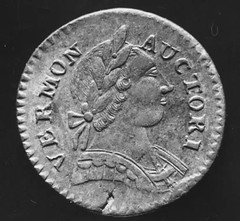 This presentation will trace the history of the rare and desirous Vermont copper coinage of the 1780s. It will not only cover their production and circulation, but also place them within the larger context of pre-Federal money in the United States. From official production to spurious counterfeits, this presentation will help you understand the hardships of monetary circulation in early Vermont.
This presentation will trace the history of the rare and desirous Vermont copper coinage of the 1780s. It will not only cover their production and circulation, but also place them within the larger context of pre-Federal money in the United States. From official production to spurious counterfeits, this presentation will help you understand the hardships of monetary circulation in early Vermont.
Dr. Jesse Kraft is the Resolute Americana Assistant Curator at the American Numismatic Society where he oversees the collection of coins, tokens, medals, and paper currency of both North and South America. He is an expert on monetary circulation in early America and routinely gives lectures on the topics. He is on the Editorial Committee for the Journal of Early American Numismatics, and has a forthcoming book on the circulation of foreign coinage in early America.
John Mutch passed this along from the e-mailing list of the Vermont Historical Society (his ancestors lived in VT). It's a live Zoom presentation January 11 @ 6:00 pm - 7:00 pm, but hopefully it will be recorded. -Editor
To purchase tickets, see:
The History of Vermont Copper Coins, 1785–1788
(https://benningtonmuseum.org/event/2023vtcoins/)
Sponsian's Coins Revealed
Martin Purdy writes:
"This clip from a British numismatist puts forward a very convincing argument for the origin of the "Sponsian" gold coin. I don't think anyone had mentioned the mismatch of design elements, or that the reverse was actually based on a Roman republican issue!"
Thanks - interesting. -Editor
To watch, see:
Sponsian's coins Revealed: are these ancient Indian copies?
(https://www.youtube.com/watch?v=ISdm8Prx2gU)
AUDIO: MCDOWELL, SCHENKMAN
There are so many great numismatic podcast episodes these days that it's hard to keep up. Here are a couple well worth a listen. -Editor
A Conversation with Chris McDowell
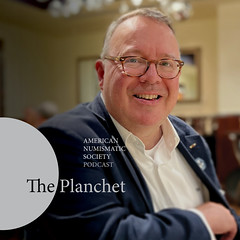 Christopher R. McDowell is a lifelong numismatist and recognized expert in the area of colonial coinage and medals. He is the author of Abel Buell and the History of the Connecticut and Fugio Coinages along with several award-winning articles on American colonial coins and medals. An ANS Fellow, Chris is also the editor of the Journal of Early American Numismatics. A graduate of Marshall University and West Virginia University College of Law, Chris served as an officer in the U.S. Army Judge Advocate General's Corps and was stationed in Korea, Germany, Bosnia, and Kansas. He currently practices law in Cincinnati, Ohio. His newest book is titled The Early Betts Medal Companion: Medals of America's Discovery and Colonization (1492–1737) published by the American Numismatic Society in 2022. The idea for the book grew from Chris' interest in Charles Wyllys Betts and American colonial history and medals. In this episode we talk about Betts medals and their eponymous collector, how Chris got his start in the hobby, and his favorite numismatic colonial crime.
Christopher R. McDowell is a lifelong numismatist and recognized expert in the area of colonial coinage and medals. He is the author of Abel Buell and the History of the Connecticut and Fugio Coinages along with several award-winning articles on American colonial coins and medals. An ANS Fellow, Chris is also the editor of the Journal of Early American Numismatics. A graduate of Marshall University and West Virginia University College of Law, Chris served as an officer in the U.S. Army Judge Advocate General's Corps and was stationed in Korea, Germany, Bosnia, and Kansas. He currently practices law in Cincinnati, Ohio. His newest book is titled The Early Betts Medal Companion: Medals of America's Discovery and Colonization (1492–1737) published by the American Numismatic Society in 2022. The idea for the book grew from Chris' interest in Charles Wyllys Betts and American colonial history and medals. In this episode we talk about Betts medals and their eponymous collector, how Chris got his start in the hobby, and his favorite numismatic colonial crime.
Total Time: 44:11
Music: Piet Hein (de Zilvervloot)
, a traditional drinking song commemorating the capture of the Spanish silver fleet by the Dutch in 1628.
From the American Numismatic Society podcast The Planchet. -Editor
To listen, see:
S3, Ep. 9. A Conversation with Chris McDowell
(https://numismatics.org/pocketchange/03-09/)
To read the earlier E-Sylum article, see:
NEW BOOK: THE EARLY BETTS MEDAL COMPANION
(https://www.coinbooks.org/v25/esylum_v25n48a04.html)
The Many Talents of David Schenkman
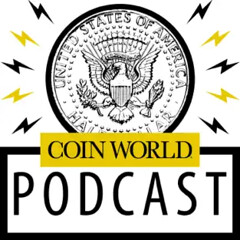 Jeff and Larry get an opportunity to speak with Dave Schenkman, who has won multiple literary awards, written books on numismatic subjects, taught seminars, led organizations and is a talented musician to boot. He's well known in the world of tokens and medals, so get to know him!
Jeff and Larry get an opportunity to speak with Dave Schenkman, who has won multiple literary awards, written books on numismatic subjects, taught seminars, led organizations and is a talented musician to boot. He's well known in the world of tokens and medals, so get to know him!
Starting around minute 23, my good friend Dave Schenkman discusses his time in numismatics, his interest in tokens, and the Token and Medal Society. -Editor
To listen, see:
Episode 181 - The Many Talents of David Schenkman
(https://podcasts.apple.com/us/podcast/episode-181-the-many-talents-of-david-schenkman/id1457838164)
MORE ON PAULINE PAULING EMMETT
Clifford Mishler writes:
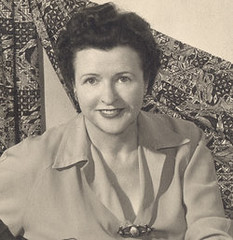 "I enjoyed an interaction with Pauline over some years back in the late-60s to early 70s . . . primarily through correspondence . . . knowing her as Pauline Ney at the time.
"I enjoyed an interaction with Pauline over some years back in the late-60s to early 70s . . . primarily through correspondence . . . knowing her as Pauline Ney at the time.
"I often encountered her while attending the late and lamented COIN (Convention of International Numismatics) shows in Los Angeles . . . even had the welcome opportunity to visit her Santa Monica shop while enjoying a driving trip through the Southwest . . . in 1961 . . . maybe it was 1962. I remember it as a nicely appointed business location . . . and recall that it was an active arena on the occasion of my visit.
"While I believe I was a member of SIN for a time, which was closely affiliated with COIN, I don't really have any detailed information that I might share on the organization . . . it being locally based . . . I believe I may have joined the organization while visiting Pauline's show . . . I do recall that I met one or two local members/officers who happened to be in the shop at the time.
"My association with Pauline originated as a consequence of her purchase of examples of the Alaska-Hawaii Statehood medals that I issued in 1959 . . . she was an active collector and dealer in so-called dollar issues at the time . . . alongside the world and U.S. coins which she stocked in the shop.
"One of my recollections of Pauline is that at one of the COIN shows that I attended . . . and perhaps on one or two other occasions . . . she exhibited her brother Linus Pauling's pair of Nobel Prize medals . . . I seem to recall her telling me that he was a candidate for a third . . . in medicine . . . he being a strong advocate of the properties and benefits of Vitamin C.
"Pauline was an interesting lady, to say the least, one with a unique association . . . she had the good fortune to enjoy a long and rewarding life."
Thank you. Pete Smith passed along these images of two advertising mirrors for the organization Pauline co-founded. Thanks. -Editor
Pete adds:
"These are examples that illustrate how history is illuminated by the objects that are left behind."
To read the earlier E-Sylum article, see:
PAULINE PAULING EMMETT (1902-2003)
(https://www.coinbooks.org/v26/esylum_v26n01a12.html)
MORE ON MEDALS WITH PRECIOUS STONES
Pete Smith submitted these thoughts on medals with embedded precious stones. Thanks. -Editor
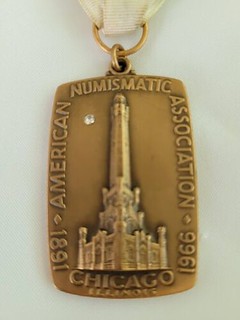 Recent discussion of medals with precious stones brought to mind the ANA convention medals
issued in 1966. The convention badge had a name badge and hanging red, white and blue ribbon
and hanging bronze medal.
Recent discussion of medals with precious stones brought to mind the ANA convention medals
issued in 1966. The convention badge had a name badge and hanging red, white and blue ribbon
and hanging bronze medal.
The building shown on the badge is a representation of the Chicago Water Tower. The white dot in the field near the upper left is a small diamond chip as the 1966 convention was the 75-year diamond jubilee for the ANA.
Less frequently seen is the exhibitor medal. It features the convention badge with a reproduction at the top. The black dot on the badge near the left top is a hole that once contained a diamond chip. I don't know the story but I can guess that a previous owner removed the diamond thinking it could be sold at a great price.
I suspect that owner found the diamond to be worthless and the medal without the diamond was worth-less. The missing diamond could be replaced at little cost but I never made the effort.
During the time of high gold prices around 2010, I was a gold jewelry and scrap buyer for Grove Coin in Woodbury, Minnesota. My boss would handle the purchase of any large diamonds of a half carat or larger. Smaller stones that came with gold jewelry were inconsequential.
A customer would come in with a plastic bag and a mixed lot of chains, rings, tie tacks and cuff links. I would sort the items, weigh 10K, 14K and 18K separately and make an offer that was usually accepted. I explained that my offer was based on gold weight with no added value for any stones. Occasionally a customer would ask to have a diamond removed and we would give it back to them. The scrap went into a tub to be melted.
I heard from a customer who gave her wedding diamond to her young daughter who played with it in her sandbox.
It might take several months to accumulate enough scrap for a melt. A batch might include holed or damaged U. S. gold coins, odd denomination world gold coins and occasional gold medals. We tried to have the lot average 14K or higher.
The scrap would be melted, a bar poured and stones would float to the top and be imbedded in a layer of slag. As a service, the smelter would separate off the stones and colored glass and return those to us.
There was also a process to frost the stones with hydrofluoric acid (HF) to separate diamonds from cubic zirconium (CZ). We had glass vials with scrap diamonds sitting around for years before they would be sold.
The industry term for scrap diamonds is melee. It is measured in points with 100 points to a carat and five carats to a gram. There are melee buyers who travel the country and buy from accumulators like us. I recall a deal where we sold for $1 a point of $100 per carat. Yes, that stuff has a value, but it takes hundreds of transactions over a period of years to accumulate enough for a sale.
We were left with a glass jar with hundreds of colored stones and bits of colored glass. There might be a market for that somewhere, but we never found that market.
A seller with a single small diamond removed from a medal is not going to find a market to sell that stone.
To read the earlier E-Sylum articles, see:
LOOSE CHANGE: DECEMBER 25, 2022 : NFT Tokens
(https://www.coinbooks.org/v25/esylum_v25n52a26.html)
NOTES FROM E-SYLUM READERS: JANUARY 1, 2023 : Israeli Diamond Industry Medal
(https://www.coinbooks.org/v26/esylum_v26n01a07.html)
NOTES FROM E-SYLUM READERS: JANUARY 8, 2023
Numisma Reprinted in 1983
In response to Dave Hirt's question, Steve Shupe writes:
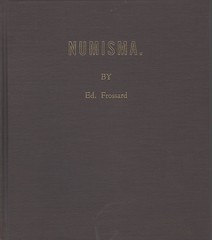
"I have copy #18 of the hard copy of Numisma and notes I made at the time of acquisition shows that it was printed in 1983."
Mike Bourne writes:
"My parents owned a graphic arts and printing company while also running the numismatic literature business. It was named Ramm Communications named for Remy/Avis/Mike/Marlene Bourne. 100 copies of a soft cover ringed bound edition were distributed by Cal Wilson and thru Ken Lowe of Money Tree. In addition a limited number of hard bound numbered copies were distributed to family, long term customers and to Ken Lowe and Cal Wilson. This was done in 1983. It is likely that the copy referenced was Ken Lowe's copy"
Thank you! I haven't seen the softcover edition. I have one of the hardbounds - my copy is pictured above. -Editor
To read the earlier E-Sylum article, see:
NOTES FROM E-SYLUM READERS: JANUARY 1, 2023 : John Igo, Numisma Reprint Information Sought
(https://www.coinbooks.org/v26/esylum_v26n01a07.html)
Impact of the 1909 ANA Election
Darryl Atchison writes:
"Over the past 20 years there has been a great deal of interest in the American Numismatic Association Presidential election of 1909 and the annual convention in Montreal at which this election was held.
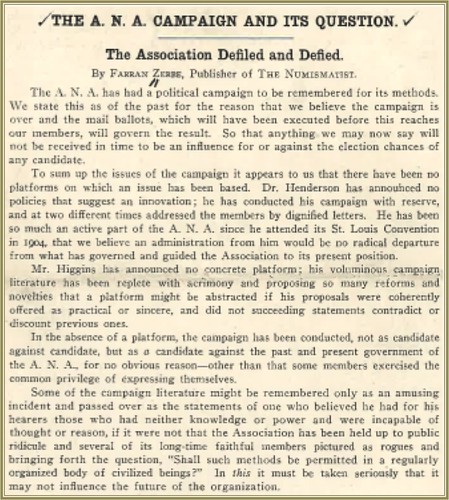 "It almost goes without saying that this is probably the single most
controversial event in the history of the A.N.A which is perhaps why it has
garnered so much attention - including an article in the Winter 2022 issue
of The Asylum.
"It almost goes without saying that this is probably the single most
controversial event in the history of the A.N.A which is perhaps why it has
garnered so much attention - including an article in the Winter 2022 issue
of The Asylum.
"Even more than a century later this particular election is still quite contentious - undoubtedly because of the candidates and the personalities involved on both campaign committees..
"One thing that hasn't really been investigated is the fallout from this election (i.e. the impact that it may have had on not only the candidates and their campaign teams but also the general membership).
"We know that Higgins resigned from the A.N.A. shortly afterwards but I wonder how many other members didn't renew their memberships - or even how many of the proxy memberships weren't genuine to begin with - i.e. the proxies represented votes but not individuals who intended to retain their membership in either the short term or the long term.
"I wouldn't be surprised if someone has already looked into this and I would be very interested in any of their observations."
I'm not sure if this aspect has been covered before. Great question. -Editor
To read an earlier E-Sylum article, see:
MORE ON ZERBE AND THE 1909 ANA ELECTION
(https://www.coinbooks.org/v25/esylum_v25n26a12.html)
QUERY: ALBERT LEVITT AND THE 1921 ASSAY COMMISSION
Gary Greenbaum has a question about 1921 Assay Commissioner Albert Levitt. -Editor
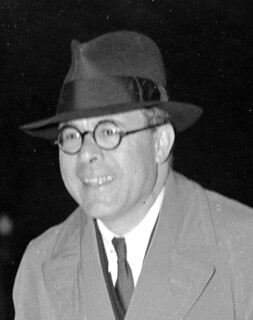 Hi, I'm Gary Greenbaum. In addition to being a lawyer, I write for Wikipedia. Some of my articles are on numismatics, but occasionally, an article I'm working on that has nothing to do with coins turns up an unexpected numismatic connection.
Hi, I'm Gary Greenbaum. In addition to being a lawyer, I write for Wikipedia. Some of my articles are on numismatics, but occasionally, an article I'm working on that has nothing to do with coins turns up an unexpected numismatic connection.
Currently, I'm working on the article on Albert Levitt. Briefly a federal judge, Levitt careened through an eccentric career in the law and public affairs. His most famous contribution to the law came with his 1937 challenge to the Supreme Court seating its latest member, Hugo Black. The resulting decision, Ex parte Levitt, is an important case on the law of standing, meaning you have to have sufficient connection to a matter to bring a lawsuit. The court said that Levitt's status as a citizen and member of the Supreme Court Bar did not entitle him to challenge Black's appointment. Levitt also, in 1950, ran against Richard Nixon for the Republican nomination for Senate in California, and finished sixth out of six.
But, for reasons I've been unable to discern, he was also a member of the 1921 Assay Commission, where in February of that year, he rubbed shoulders at the Philadelphia Mint with such notables as Buffalo nickel designer James Earle Fraser and the longtime chairman of the House Coinage Committee, Congressman Albert Vestal, as well as two former ANA presidents, Judson Brenner and J M Henderson. The question I'd like to ask for help with is, why was he a member?
The only mention of Levitt in The Numismatist (April 1921, p. 159) says that Levitt wasn't an ANA or ANS member, and mentions his affiliation with The George Washington University, where he was teaching law for a year, one of a series of appointments he held in the 1920s. That hardly seems a reason for Wilson to put him on the Assay Commission. A look at the Newman Portal finds a 1977 article in Coin World about the Assay Commission, that describes Levitt as one of three prominent educators
appointed to the 1921 Assay Commission, something that probably overstates the case, at least as far as Levitt goes.
Thanks. Can anyone help? I added an image of the 1921 United States Assay Commission Medal from a 2020 Stack's Bowers sale. -Editor
For more information on Leavitt, see:
Albert Levitt
(https://en.wikipedia.org/wiki/Albert_Levitt)
To read the complete lot description, see:
1921 United States Assay Commission Medal. Bronze. 51 mm. By George T. Morgan. JK AC-65a. Rarity-5. MS-67 (NGC).
(https://auctions.stacksbowers.com/lots/view/3-LYTZK/1921-united-states-assay-commission-medal-bronze-51-mm-by-george-t-morgan-jk-ac-65a-rarity-5-ms-67-ngc)
VOCABULARY TERM: METAL CLEANING
Here's another entry from Dick Johnson's Encyclopedia of Coin and Medal Terminology. -Editor
Metal Cleaning. Any of various methods of removing dirt, some corrosion and minute surface defects from metal; these include: abrasive blasting, acid dip, blanching, heat treating, sandblasting, shot peening, barrel tumbling, and water hone. Blanks are often metal cleaned by pickling or by one of these abrasive methods at the same time they are annealed – softened by heat treating – before striking as a customary step of metalworking. Any of these steps will produce an activated surface on the blank. This is not a problem if the striking is done within a reasonable time (up to three months) otherwise the blanks will tone before striking.
Coin blanks are annealing and cleaned at most mints prior to being upset and struck. United States mints clean and anneal all denominations and compositions except cents (which are annealed only). At U.S. mints the cleaning process is called whitening
and where this occurs is called the whitening room.
Use of this term is obvious, as the blanks emerge from the processing considerably lighter then beforehand.
Art medals are cleaned between multiple striking (as part of annealing) during work in process. The first step of finishing also includes some form of metal cleaning, usually abrasive blasting. Since some additional finishing will take place the activated surface caused by the abrasive blasting will be eliminated by the permanent finish on the medals.
Recent developments in metal cleaning include a vibratory bowl (using a detergent) and ultrasonic cleaning (using a solution). Both of these are nonabrasive methods, in contrast to the abrasive methods listed above. Blanks or struck pieces – at any step of the process – can be cleaned with nonabrasive methods. In this book metal cleaning is used for blank cleaning only. For the cleaning of existing coins and medals see cleaned, cleaning. See also repair and restoration.
References:
C66 {1988} Cooper pp 190-93, 240.
To read the complete entry on the Newman Numismatic Portal, see:
Metal Cleaning
(https://nnp.wustl.edu/library/dictionarydetail/516304)
FINDING AND BINDING SPINK'S NUMISMATIC CIRCULAR
Andrew Pollock passed along a nice British Numismatic Society blog article by Gary Oddie about assembling and binding a run of Spink's Numismatic Circular. Here's an excerpt - see the complete article online. -Editor
The recent acquisition of a block of loose copies of Spink's Numismatic Circular; 1911-1934, only lacking December 1912, has prompted me to look more closely at this publication. The group had been for sale on eBay in Italy for several months with a buy-it-now price and a surprisingly low FedEx shipping cost of £15. Whilst I already had a complete set of SNC back to 1947, a copy of Dave Greenhalgh's index, a few odd early single issues and a couple of early tatty annual volumes, I had never really considered going back further due to the difficulty of achieving completion.
A quick search of the usual suspects and the internet (Paul and Bente Withers at Galata, Douglas Saville, Chris Martin at Ancient & Oriental, AbeBooks (part of Amazon since 2008), BookFinder, and eBay) revealed an amazing coincidence. Between these sources it was possible to build a complete block from the first issue of December 1892 to December 1938, including the missing issue from December 1912! The prices were consistent and reasonable for a year's issue with a hardback binding, so the project began.
The weeks passed, the estimated delivery date approached, and concern was increasing about the infeasibly low shipping cost. Then, on the last day of the delivery window, two heavy boxes arrived (7kg each). On opening the boxes, it became clear that these SNCs had been together for the past century, in paper folders tied up with string. The two creases in each issue where they had originally folded for posting were still visible in many copies.
The outer leaves of many issues were quite fragile with many of the hinges torn and broken, so great care had to be taken when reading and turning the pages.
The second stage of the project began and while waiting for the other volumes to arrive, the loose copies were quickly scanned through and read to reveal a vast amount of previously unknown information. Whilst the index to SNC is good, it is not perfect, and for example the serialized Biographical Index by Forrer is only indexed by the title of each instalment and not the individual entries.
A few weeks later and it was possible to take the photo shown below.
There's much more to the story, so be sure to check out the complete article. -Editor
To read the complete article, see:
Spink's Numismatic Circular – A Personal Story
(https://britnumsoc.files.wordpress.com/2023/01/314-spink-num-circ-bns-blog-oddie-002.pdf)
BRITISH NUMISMATIC SOCIETY MEETING AT NYINC
Peter Preston-Morley writes:
"The British Numismatic Society Meeting meeting at the NYINC show will take place in the Morgan Suite at the InterContinental New York Barclay, on E 48th Street, on Friday January 13th, at 4 PM.
"I'm very pleased to say that our speaker will be John Kraljevich, one of America's leading professional numismatists, who won't need any introduction to most of your readership. His talk is entitled "We Owe Allegiance to No Crown: the War of 1812 in American and British medals.
"All are welcome, and you don't have to be a member of the Society to attend."
Sounds great! Here's John's summary of his talk. -Editor
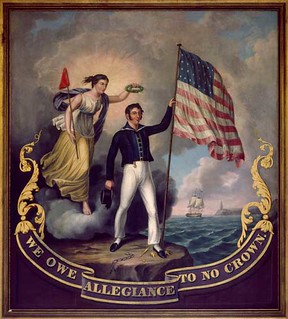 Canadians celebrate it. Indigenous people curse its memory. Americans forgot about it. And the British, having burned down the White House, are just amused by it! The War of 1812 represented an inflection point in the history of North America, a multi-front war that tested the promise and wisdom of the adolescent American experiment. Though little more than a draw militarily, the survival of the United States represented a substantial victory for the new nation.
Canadians celebrate it. Indigenous people curse its memory. Americans forgot about it. And the British, having burned down the White House, are just amused by it! The War of 1812 represented an inflection point in the history of North America, a multi-front war that tested the promise and wisdom of the adolescent American experiment. Though little more than a draw militarily, the survival of the United States represented a substantial victory for the new nation.
The United States government celebrated their fortune with more official medal types for this three-year conflict than any other war, including the American Revolution. This lecture will examine the American military and naval medals issued during the War of 1812, British-issued commemorative and campaign medals related to the war, and medals that fit into the often-overlooked Anglo-native conflict that underscored the entire episode.
For more information on the British Numismatic Society, see:
https://www.britnumsoc.org/
For more information on the show, see:
https://www.nyinc.info/
2024 AIA/SCS CALL FOR PAPERS
Two numismatic conference sessions will be hosted at the 2024 Archaeological Institute of America/Society for Classical Studies (AIA/SCS) meeting in Chicago, IL and calls for papers are now open. -Editor
CFP: Coins, Copies, and Prototypes
Society of Classical Studies 155th Annual Meeting
JANUARY 4-7, 2024
CHICAGO
Call for Papers for Panel Sponsored by the Friends of Numismatics
Coins, Copies, and Prototypes
Organized by Roberta Stewart (Dartmouth College) and Nathan Elkins (American Numismatic Society)
Every element of coin design (legend, portrait, symbols, and their placement) is a product of conscious selection and also of coining traditions. The images on coins relate directly to other visual media and traditions in the time and place that they were made. Coins also carry words that mirror epigraphic conventions and models. Together, word and image on coins reflect political, social, and cultural ideas iterated in ancient prose and poetry. As mass-produced objects used in commerce, coins were a primary means of communication and they and their designs were subject to copying and imitation. Copies and near copies of ancient coins could be made by communities for various reasons or by individuals seeking illegal profits. Some coins and their designs also served as prototypes for later numismatic designs to recall particular concepts, especially in a political context.
Historians, archaeologists, numismatists have studied coin design across time and place, both the re-use of types or the use of modified types, in order to plot manufacture, to track cross-cultural communication, as well as to study historical processes of continuity and change. The study of types, copies, imitations, and prototypes also allows scholars to consider the function of coins to communicate, their intelligibility, within and across cultures.
Coins, Copies, and Prototypes seeks papers that address the myriad ways that coins reflect, mediate, transform, and communicate ideas related in other visual or textual media, or how those other media might have been influenced by the coinage. We are also interested in papers that address the phenomenon of copying itself, whether it be coins drawing from other numismatic prototypes or from models in the visual arts or literature. We also welcome papers that explore the role of ancient fakes and forgeries.
Questions may be directed to Roberta Stewart (Roberta.Stewart@Dartmouth.edu) or Nathan Elkins (nelkins@numismatics.org).
Please send abstracts for a 15-20 minute paper by email to Roberta Stewart (Dartmouth College) at Roberta.Stewart@Dartmouth.edu. Deadline: February 12, 2023. Abstracts should be no more than 500 words and follow the SCS guidelines for individual abstracts (see the SCS Guidelines for Authors of Abstracts). Please do not identify yourself in any way in the abstract itself. The organizers will review all submissions anonymously, and their decision will be communicated to the authors of abstracts by early March, with enough time that those whose abstracts are not chosen can participate in the individual abstract submission process for the upcoming SCS meeting.
To read the complete Call for Papers, see:
CFP: Coins, Copies, and Prototypes
(https://classicalstudies.org/annual-meeting/cfp-coins-copies-and-prototypes)
For more information on the conference, see:
2024 Annual Meeting
(https://classicalstudies.org/annual-meeting/2024-annual-meeting)
THE BOOK BAZARRE
NUMISMAGRAM SELECTIONS: JANUARY 8, 2023
Jeremy Bostwick with Numismagram forwarded these four medals from his recent addition of new material online. In addition to those below, one will find an attractively toned papal medal, a large, glossy award medal from the 1862 world's exhibition in London, and a highly interesting New Year's medal from Germany featuring a sphinx, among other things. For all of the new items, please visit https://www.numismagram.com/inventory. -Editor
102244 | GREECE. Othon (Otto) I bronze Medal. Issued circa 1839. Commemorating the founding and contributors of the University of Athens (44mm, 41.08 g, 12h). By K. Lange at the Vienna mint. ?TO? ??S????S ??S ??????S, mantled bust left / ???S ????G????S ??? ??????S??????, façade of the University of Athens; in three lines in exergue, ?T?????OT? / ??? ? ????? / ?O?T. Edge: Plain. Wurzbach 7024. Gem Mint State. Highly pleasing and attractive brown surfaces; immensely rich and brilliant, with a great lustrous nature in the fields and some hints of iridescence throughout. Very likely one of the finest of the type extant. $595.
Following Greek independence from the Ottoman Empire in 1829 and the assassination of its assigned governor, John Capodistria (Ioannis Kapodistrias) in 1831, the three Great Powers (composed of Great Britain, France, and Russia), installed the Bavarian prince, Otto Friedrich Ludwig, as the king in Greece. Ultimately, Otto proved unpopular, and was deposed in 1862 while in the countryside. He would later die in exile in his native Bavaria five years later.
To read the complete item description, see:
102244 | GREECE. Othon (Otto) I bronze Medal.
(https://www.numismagram.com/product-page/102244)
102292 | JAPAN. Crown Prince Yoshihito & Sadako Kujo bronze Medal. Issued Meiji 33 (1900). Commemorating the royal marriage of the future emperor & empress (Taisho & Teimei) (55mm, 12h). Osaka mint. Two fans over floral arrangement, the fan in the back bearing a design with plum flowers (Yoshihito), the fan in the front being plain (Sadako); the floral arrangement is composed of chrysanthemum and wistaria, representative of the imperial pair; around, border of eight clouds, possibly indicating the sansai (heaven, earth, and man) and go-un (clouds of good augury) / Inscription in five vertical lines of Yamoto wa-sun style, all within recessed cartouche of kakemono style. AJN, Vol. XLIV, No. 4 (October, 1910), pl. 21, II. NGC MS-65 Brown. Rich glossy brown surfaces, with a great deal of lustrous brilliance in the fields; a minor spot in the left field on the reverse is noted for completeness. Quite scarce in such an alluring and elevated state of preservation. $395.
Yoshihito was the son of the Meiji emperor and one of his royal concubines, Yanagiwara Naruko, and would marry Sadako Kujo in 1900 after a careful arrangement by his father. Sadako was a daughter of Duke Michitaka Kujo, head of Kujo branch of the powerful Fujiwara clan. Yoshihito would succeed his father upon the latter's death in 1912, though he himself would only reign until late 1926, being succeeded by his and Sadako's son, Hirohito—posthumously becoming known as the Showa emperor.
To read the complete item description, see:
102292 | JAPAN. Crown Prince Yoshihito & Sadako Kujo bronze Medal.
(https://www.numismagram.com/product-page/102292)
102289 | SWITZERLAND. Bern. Silver Academic Prize Medal or "Gärtnerpfennig". Issued circa 1820 for outstanding pupils in the canton (31mm, 7.44 g, 12h). CULTURA MITESCIT (culture ripens), gardener kneeling right, trimming a sapling; basket of shoots to right; PRÆM DILIG (a prize for diligence) in exergue / RESPUBLICA BERNENSIS, crowned cantonal coat-of-arms of Bern within wreath composed of olive branch and palm frond. Edge: Horizontal leaf reeding. SM 712; Meier & Häusler 173. Gem Mint State. Highly lustrous and prooflike, with a subtle color and great pullaway toning. Fairly rare in this elevated and rather attractive state of preservation. $375.
Quite popular in the canton of Bern during the 18th and early 19th centuries, the so-called Gärtnerpfennigs,
of gardener's pennies,
were a special form of scholastic prize given to deserving students for their academic achievements. They featured a kneeling gardener on one side, as the gardener was considered an allegory of diligence.
To read the complete item description, see:
102289 | SWITZERLAND. Bern. Silver Academic Prize Medal or "Gärtnerpfennig".
(https://www.numismagram.com/product-page/102289)
102239 | UNITED STATES & SPAIN. Christopher Columbus silvered bronze Medal. Issued 1892. Commemorating the 400th anniversary of his discovery of the New World (37mm, 28.81 g, 12h). By C. Mathey-Doret. CRISTÓBAL COLÓN / IV CENTENARIO, 1492–1892, capped bust left / 3 DE AGOSTO DE 1492 A CASTILLA I A LEÓN / NUEVO MUNDO DIÓ COLÓN 12 DE OCTUBRE DE 1492, coat-of-arms of Columbus as granted by Pope Alexander VI; all over wreath of oak and laurel branches. Edge: Some slight discoloration; otherwise plain. Eglit 282; Storer 170; Rulau B25. Choice Mint State. Lightly toned and highly lustrous. $235.
During the lead-up to the quadricentennial of Columbus's initial contact with the New World, numerous medals were designed and struck, both in the United States—in conjunction with the 1893 Columbian Exposition in Chicago—and abroad, sometimes for this event or for similar others. In the case here, it was for the celebration back in Spain, for whom Columbus sailed. His special coat-of-arms, given to him by Pope Alexander VI (the Spaniard Rodrigo de Borja), contained emblems of Castile y León (lion rampant and castle) and of Columbus (gold islands—indicative of his discoveries—and anchors).
To read the complete item description, see:
102239 | UNITED STATES & SPAIN. Christopher Columbus silvered bronze Medal.
(https://www.numismagram.com/product-page/102239)
NUMISMATIC NUGGETS: JANUARY 8, 2023
Here's a selection of interesting or unusual items I came across in the marketplace this week. Tell us what you think of some of these. -Editor
1894 gold sovereign QUEEN VICTORIA coin.
DUG OUT OF THE GROUND AFTER MANY YEARS HIDDEN. THE PHOTOS CLEARLY SHOW THE POOR CONDITION OF THE COIN.
Passed along by Ken Spindler, who asks, "But will it slab?" Well, there are more than a few collectors who for grins compete for the lowest condition collection, so maybe this will find a home outside the melting pot. -Editor
To read the complete lot description, see:
1894 gold sovereign QUEEN VICTORIA coin
(https://www.ebay.com/itm/134393463848)
A c.1900 French Brothel Token, Aux Glaces 25 R.St Apolline Paris, Monnaie de Singe
Google translates "Monnaie de Singe" as "Monkey Currency"... as in "Monkey Business" ??? "Aux Glaces" translates as "Ice Cream". I don't know what to make of this one. All "brothel" tokens are suspect as concocted fantasies. Is this something else that's been misdescribed? -Editor
To read the complete lot description, see:
A c.1900 French Brothel Token, Aux Glaces 25 R.St Apolline P...
(https://www.easyliveauction.com/catalogue/lot/
0b38eff4d5c2db452371747953106593/0af8d24542e81eb9357e7ef448a6646f/collectables-general-lot-406/)
HERBERT L LEHMAN NY GOVERNOR 1933-42 MEDAL, JOHN DAVENPORT FOUNDER OF NEW HAVEN 1638-1988 MEDAL & GEORGIVS II DEI GRATIA ESTIMATE $80 - $100.
An interesting group lot of three medals. -Editor
To read the complete lot description, see:
COLLECTOR'S LOT OF MEDALS
(https://live.silvercityauctions.com/online-auctions/silver-city-auctions/collectors-lot-of-medals-4583935)
USE OF SILVER AS MONEY IN ISRAEL
Howard Berlin passed along this Jerusalem Post article about the early use of silver as money in Israel. Thanks. -Editor
Archaeologists from the University of Haifa and the Hebrew University of Jerusalem have found silver coins made in Anatolia (Turkey) in the 17th century BCE, the Middle Bronze Age, at archaeological digs from the beginning of the Late Bronze Age, a century later.
The coins, which were used in regional trade, including with ancient Israel, were discovered at Tel Shiloh near Jerusalem, Tel Gezer on the western slopes of the Judean Hills and Tell al-Ajjul in the Gaza Strip.
Their discovery proves the use of silver coins as money in the southern Levant and precedes by 500 years what was thought to be the use of such coins.
The identification of Anatolia as the source of the money indicates continuous and long-term trade with Asia Minor.
Moving to an economic method based on silver coins, which do not spoil and have a small volume and weight compared to grain, brings with it many advantages and new possibilities that will surely contribute to the urban and economic development of the entire area,
said Dr. Tzilla Eshel of the University of Haifa, who led the study.
It also showed that the silver coins continued to arrive frequently and are evidence of long and stable trade relations with Anatolia that were unknown to researchers until now.
The silver coins are pieces of silver whose unpolished form clearly indicates that they are not jewelry or ornamental objects. That they were usually found together, wrapped in cloth and kept in pottery, indicates that they were used as a means of payment.
Previous studies by the team of researchers – Eshel, Prof. Yigal Erel and Prof. Naama Yahlom-Mack from Hebrew University and Prof. Ayelet Gilboa from the University of Haifa – dealt extensively with silver hoards from the Iron Age and located their origin.
To read the complete article, see:
Silver coins were used as money in Israel 3,600 years ago - study
(https://www.jpost.com/archaeology/article-727956)
Thanks also to Aaron Oppenheim for another article on the topic. -Editor
To read the complete article, see:
Study reveals silver coins were used as currency in Israel 3,600 years ago
(https://www.i24news.tv/en/news/israel/archeology/1673198534-study-reveals-silver-coins-were-used-as-currency-in-israel-3-600-years-ago)
BAR KOCHBA REVOLT COIN FOUND IN ISRAEL
Dick Hanscom forwarded this article on a Bar Kochba revolt coin found recently in Israel. Thanks. -Editor
Acoin from the Bar Kochba revolt was found recently during an archaeological dig in Murabba'at caves in the Nahal Darga Reserve in the Judean Desert, the Israel Antiquities Authority announced on Thursday.
The coin, dated to the second year of the revolt (133 AD), features a date tree on one side with the name "Shimon" on it. Shimon Bar Kochba was the leader of the revolt.
The other side of the coin features a vine lead with the inscription: "Year 2 of the liberation of Israel."
The coins were minted by Bar Kochba by using Roman coins that were erased and re-struck.
"This is not the only find found in the current excavation, which can be attributed to the Jewish rebels," says the director of the excavation, Amir Ganor from the Antiquities Authority. "During the operation, remnants of unique textiles and fabrics in a variety of colors were uncovered, among which a light blue thread stood out inside a light-colored fabric. It is possible that this fabric was used as part of an ancient tallit from about 2,000 years ago."
In 1951, a bunch of papyri belonging to Bar Kochba's archive was discovered in this cave, including the full name of the leader, Shimon Bar Kochba.
Archaeologists are continuing excavations in hopes of confirming if the cave was used as Bar Kochba's headquarters in the Judean Desert.
To read the complete article, see:
Coin from Bar Kochba revolt found in Judean Desert
(https://www.msn.com/en-us/news/world/coin-from-bar-kochba-revolt-found-in-judean-desert/ar-AA1615Ux)
SHROPSHIRE HOARD DECLARED TREASURE
Thanks to David Sundman for passing along this Sunday Times article about a small hoard found in Shropshire. -Editor
What have the Romans ever done for us? In the case of one detectorist from North Wales, they have got him on the property ladder.
Darren Booth's discovery of 377 denarii coins in a Shropshire field has landed him a payday, the haul — apparently a soldier's savings — enabling him to obtain a mortgage.
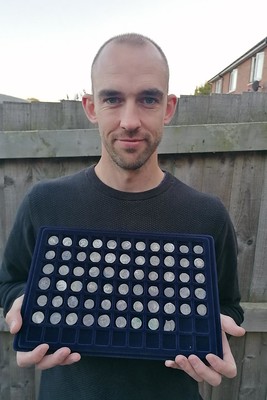
We can't discuss values but I think we are talking low double-figure thousands,
Booth, 40, said. It is the historical worth that has given him the greater thrill. It is remarkable to think that I was the first person to touch these coins in 2,000 years. You don't get that kind of feeling with any other hobby,
he said.
The discovery has been declared as treasure and the coins are being bought by the British Museum and Shropshire Museums.
The coins include a rare example stamped with the visage of the Emperor Vespasian, only the second of its kind to be discovered in the UK.
The British Museum has the other but, luckily for me, my coin is in much better condition,
Booth said.
He will split the proceeds with the landowner of the field, near Gobowen in the Shropshire Marches, where the coins were found.
Initially Booth found one piece, the first Roman coin he had come across. One become two and then the trickle led to a collection of 273 coins buried in one stash. It is suspected that they belonged to a soldier who buried them for safekeeping but never returned. The money represented a year's wages, and has coins stamped with other emperors, including Augustus, Vitellius, Galba and Tiberius.
It is thought that the coins had been placed in a container that rotted away.
Experts described the Gobowen hoard as important.
To read the complete article (subscription required), see:
Detectorist uses a Roman's deposit for his mortgage
(https://www.thetimes.co.uk/article/detectorist-uses-a-romans-deposit-for-his-mortgage-j3v7hw5rd)
ATHELSTAN MUSEUM BUYS KING'S COIN
Here's a good news story for a museum in Wiltshire, England - they've acquired a coin issued by the King their institution is named for. The coin will go on display late in January 2023. -Editor
A rare coin showing a king who ruled more than a thousand years ago has been bought by the museum bearing his name.
Anglo-Saxon King Athelstan has an empty memorial tomb in Malmesbury Abbey and is buried somewhere in the grounds, but nobody knows where.
The town's museum is named after him and now has a coin from his reign, bought at auction after being spotted by a volunteer.
The museum has paid an undisclosed sum for the artefact.
Volunteer and trustee Jonathan Tucker - an experienced art dealer - realised that Athelstan Museum did not have any items specifically from the king's reign, which was from 924 to 939.
He set out to find something and asked the museum if he could bid on their behalf.
"One thing that struck me was that even though King Athelstan was probably based here as his capital sometime around 925, we don't actually have anything in the museum from the period," he said.
He said it is quite a unique coin and there was some bidding competition.
The museum hasn't disclosed how much it paid, but Mr Tucker said: "It didn't go astronomically high, otherwise we wouldn't have been able to afford it. It went for a good price.
"Hopefully people will look at this for generations and associate the town with Athelstan."
King Athelstan, who was the grandson of Alfred the Great, had 'Rex Totius Britanniæ' stamped on coins and charters telling all that he was the 'King of Britons' - to us now, he was the first King of all England.
Found via The Explorator newsletter. To subscribe to Explorator, send a blank email message to: explorator+subscribe@groups.io. -Editor
To read the complete article, see:
Malmesbury's Athelstan Museum buys coin of first King of England
(https://www.bbc.com/news/uk-england-wiltshire-64165743)
THE MYSTERY OF THE RED QUARTERS
Tom Kays passed along this Retroist article about those red-painted quarters that come along once in a while. Thanks. I'm pretty sure we've covered the topic earlier, but was unable to locate it in our archive. -Editor
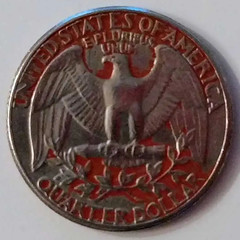 Have you ever sorted through your change and found an older quarter painted red, or the remnants of red paint that has been worn away during a few decades in someone's pocket or change jar? Congratulations! There is a good chance that you are holding a piece of arcade history.
Have you ever sorted through your change and found an older quarter painted red, or the remnants of red paint that has been worn away during a few decades in someone's pocket or change jar? Congratulations! There is a good chance that you are holding a piece of arcade history.
First of all, let me point out that there are a few alternative origins that are possible – but, not as neat as the arcade connection. Red quarters are also used for free laundromats and the occasional jukebox at the local tavern, but with change machines more available in 2017, and the increasing prices of these services, dollar bills are used much more often.
Red quarters are known as shills
or house coins.
When I managed an Aladdin's Castle arcade back in the early 1990s, I called them freebies.
Arcade machines are amazing pieces of technology. From the start button to the circuitry, to the joysticks, to the screen and speakers, millions of bits of high-tech electronic signals are bouncing around inside that pressboard cabinet before Ready Player One
ever appears in colorful, pixilated glory to you.
But, before the credit button can ever be activated, the quarter has to make its way from your pocket through a series of mechanical twists and turns before the game recognizes your offering as a legitimate form of payment. Along the way, there are many places for your quarter to become lodged or even fall through to the coin collection box without giving you a credit to start the game.
If your arcade didn't have an attendant back then, you usually just kicked or beat the coin door in a futile attempt to make it either accept the quarter – or generously return it to you. This usually never, ever worked.
Arcade attendants were the best people that minimum wage could hire at the time. While many could be trusted to open the front doors on time, most arcade owners did not trust their minions with keys to the coin doors or collection.
When a customer complained about not receiving credit for their coin, an attendant would use a red-painted quarter in the slot to make the game work. If it did, the customer could then play their game and smile. If the game still did not work, an Out of Order
sign would be placed over the screen until a repair technician could render first aid.
When it came time to count the game's coin box each week, the red quarters would be sorted out from the silver ones and returned to the attendants to use again. They wouldn't be counted as income and the arcade owner's accountant would celebrate and rejoice at the reduction of paperwork.
Why the red paint? Red paint stands out better in a sea of silver coins in the automatic counter, and in many cases, it's also the only shade of nail polish that a female employee had handy at the time.
The next time you spot a red quarter, and the date on it is from before 1992, there is a very good chance that it was used to make someone's arcade experience a happy one.
To read the complete article, see:
The Mystery Of The Red Quarters…Solved!
(https://retroist.com/mystery-of-the-red-quarter-solved/)
STUDENT STRIKES FIRST 2023 AUSTRALIAN COIN
Following a longstanding tradition, the Royal Australian Mint allowed a randomly chosen member of the general public to strike the first coins of the new year. -Editor
A Taiwanese exchange student has pressed the first coin of the year at the Royal Australian Mint in Canberra after only finding out about the annual tradition the day before.
It's been two years since coin enthusiasts have been able to gather in-person to mint the first coins of the year, but this time there were no long lines or people camping out overnight.
Instead, the first 200 people to visit the mint on Sunday morning were entered into a ballot for the first 100 coins.
Mina Hsu, who studies at the Australian National University, was the first to be selected.
"Very excited and super surprised because I just [found out about] this event yesterday," she said.
This year's coin collection, Creatures of the Deep, celebrates the underwater discoveries made by CSIRO scientists aboard the research vessel Investigator.
The coins feature the flagship vessel as well as rarely seen deep sea creatures, including bigfin squid, brittle star, dumbo octopus, gold coral, cactus urchin and the spiny king crab.
"One of the purposes of the Royal Australian Mint is to tell Australian stories to Australians, and the CSIRO, as Australia's national science agency, is really privileged to be able to showcase our unique flora and fauna and contribute to that storytelling," CSIRO acting chief executive Elanor Huntington said.
Professor Huntington said the discoveries were made during several voyages along Australia's southern and eastern coastline, reaching some of Australia's deepest habitats.
Not only is Mina's coin the first to be minted in 2023, but it is also the first to feature a new design of Queen Elizabeth II.
The coin pays tribute to the late monarch's 70-year reign with the words "Elizabeth II 1952-2022".
"It's a touching memento of what the Queen did for Australia and her contribution for the Commonwealth," Royal Australian Mint chief executive Leigh Gordon said.
"It's a very special coin for us to have that effigy on it and respect Her Majesty's reign."
To read the complete article, see:
Taiwanese student strikes first coin of 2023 as Royal Australian Mint unveils Creatures of the Deep collection
(https://www.abc.net.au/news/2023-01-01/first-coin-of-2023-celebrates-creatures-of-the-deep-royal-mint/101820218)
GALLIPOLI CONSPICUOUS GALLANTRY MEDAL
There's a memorable episode of the sitcom "Everybody Loves Raymond" where Raymond's policeman brother Robert takes a bullet in the line of duty. Their father insists he "got shot in the a$$" while Robert insists on saying it was "the upper thigh". Well, here's the story of a medal-winning seaman who saved his comrades after being shot in the "backside." -Editor
The medals of a heroic seaman who saved comrades despite being shot in the backside during the Gallipoli campaign are being sold at auction.
Leading Seaman William Pierce was hit in an assault on enemy lines but stayed to cover the retreat of colleagues.
The then 22-year-old also carried an injured friend back over no-man's-land while exposed to machine-gun fire.
He was seen loading and reloading his rifle, firing bullets in rapid rounds.
Of the 450 men in the Howe Battalion of the Royal Naval Division who set out on the assault on Turkish and German lines only 55 returned.
William, of Eastbourne, East Sussex, returned to the front line after going to hospital in Egypt and received the Conspicuous Gallantry Medal.
He was also awarded the British Royal Navy Reserve medal, the 1914 Star and British War and Victory medals. The £20,000 lot will be sold at Noonans in Mayfair, Central London.
This CGM is a very rare Naval gallantry award for that campaign, at the time it was the second highest award for gallantry to the Victoria Cross.
The medals were displayed in the Royal Marines Barracks in Kent before going to a private collector.
To read the complete article, see:
Medals of Gallipoli seaman who saved comrades after being shot in backside to go on auction
(https://www.mirror.co.uk/news/uk-news/medals-gallipoli-seaman-who-saved-28903533)
BIDEN AWARDS PRESIDENTIAL CITIZENS MEDALS
The Presidential Citizens Medal doesn't get as much press as its' higher profile cousins - we last mentioned these in The E-Sylum twelve years ago in 2010. This week President Biden awarded fourteen of them. Here's an excerpt from a Wall Street Journal article. -Editor
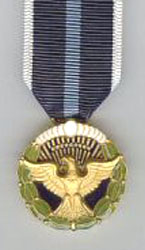 President Biden commemorated the second anniversary of the Jan. 6 riot by giving medals to law-enforcement officers who protected lawmakers that day and election officials who resisted efforts to overturn the results of the 2020 presidential contest.
President Biden commemorated the second anniversary of the Jan. 6 riot by giving medals to law-enforcement officers who protected lawmakers that day and election officials who resisted efforts to overturn the results of the 2020 presidential contest.
What you did was truly consequential,
Mr. Biden said during an afternoon ceremony in the White House's East Room.
Recipients included former Arizona House Speaker Russell Rusty
Bowers, a Republican who lost his seat in an August primary after resisting pressure from President Donald Trump to hold a hearing in the state that could have led to changing election results. Mr. Biden also posthumously recognized Brian Sicknick, a Capitol Police officer who died the day after the attack.
Mr. Biden recognized 14 people. Nine awards went to law-enforcement officials, including two whose inclusion in the ceremony was announced about an hour before it began. Three of the awards to officers were posthumous.
More than 100 Capitol Police officers were injured in the attack and several lost their lives in the following days, including Mr. Sicknick, who suffered a stroke on Jan. 7.
To read the complete article (subscription required), see:
Biden Marks Second Anniversary of Jan. 6 Capitol Attack
(https://www.wsj.com/articles/biden-to-mark-second-anniversary-of-jan-6-capitol-attack-11672973184)
None of the articles I saw pictured the medals themselves. I added an image from an earlier E-Sylum article. Here's an except from the New York Times account. -Editor
He praised Daniel Hodges, a Washington police officer who was injured during his first visit to the Capitol, for his bravery amid the chaos.
Sprayed with poison, pinned and crushed, eye almost gouged out — he didn't break,
Mr. Biden said of Mr. Hodges.
Mr. Biden honored Michael Fanone, a Capitol Police officer who he said was beaten, beaten, not pushed around, beaten
and yet defended our democracy with absolute courage.
And Mr. Biden also paid tribute to Caroline Edwards, the first law enforcement officer injured by the rioters, saying she was knocked unconscious by rioters but got back up to help hold the line.
Mr. Biden also awarded the medal to Harry Dunn, a Capitol Police officer who faced racial slurs and harassment on Jan. 6; Aquilino Gonell, a sergeant with the Capitol Police who was injured in the attack; and Eugene Goodman, a Capitol Police officer who led a pro-Trump mob away from the entrance to the Senate chamber.
To read the complete article, see:
Biden Honors ‘Extraordinary Americans' Who Defended Democracy on Jan. 6
(https://www.nytimes.com/2023/01/06/us/politics/biden-jan-6-presidential-citizens-medal.html)
To read the earlier E-Sylum articles, see:
PRESIDENT BUSH SURPRISES FOUR WITH PRESIDENTIAL CITIZENS MEDALS
(https://www.coinbooks.org/esylum_v11n47a24.html)
THE PRESIDENTIAL CITIZEN'S MEDAL
(https://coinbooks.org/esylum_v13n32a21.html)
THE ARIAS ISSUE
PANAMANIAN BANKNOTES
A Stack's Bowers article by Chris Bulfinch discusses the rare "Arias issue" banknotes of Panama. Colorful notes with interesting designs. -Editor
Included in Session C – World Paper Money Part I of our upcoming January 2023 NYINC Auction are rare, attractive Panamanian banknotes (and specimen notes) issued over the course of a week in early October 1941. The exceedingly short circulating life of the Arias Issue
was a result of World War II-era geopolitical concerns, a story that, combined with the notes' rarity, makes them very popular with world paper money collectors.
Before being deposed in a coup organized by the Allies because of his sympathy for the Axis powers, Panamanian President Arnulfo Arias authorized official and private banks to issue paper money. Only one institution, the Banco Central Emisión de la República de Panamá, got around to issuing notes before Arias was removed from office on October 9 and sent into exile.
Over that week in early October 1941, the Banco Central Emisión de la Republica de Panama issued about three million Balboas in 1-, 5-, 10-, and 20-Balboa notes (produced by the Hamilton Bank Note Company of New York) before Arias was overthrown. The succeeding regime withdrew the Arias Issue
notes from circulation and destroyed them, resulting in a small, sought-after population of surviving notes with a back story almost as colorful as the notes themselves.
Interestingly, Arias would return to power, and be deposed, two more times over the course of his life and some of his followers returned to power after the 1989 U.S. invasion, naming their political party after him in 1990. Arias' widow was elected president in 1999.
The Ellicott Collection of Panamanian Paper Money, featured in World Paper Money Part I of our January 2023 NYINC Auction, includes a number of Arias Issue notes, including a variety of Specimen notes. Also offered in the same session is the Richard Rosenman Collection of Venezuelan Paper Money. World Paper Money Part I will take place on January 14, 2023. To view lots and bid, visit StacksBowers.com.
To read the complete article, see:
DID YOU KNOW THAT THE ARIAS ISSUE
OF PANAMANIAN BANKNOTES CIRCULATED FOR ABOUT ONE WEEK?
(https://stacksbowers.com/did-you-know-that-the-arias-issue-of-panamanian-banknotes-circulated-for-about-one-week/)
ARGENTINE ARTIST PAINTS ON BANK NOTES
It's a common worldwide phenomenon that when a country's currency value drops, artists and artisans capitalize on the opportunity to turn nearly worthless banknotes into something new. Here's an article about an artist in Argentina and his work. -Editor
Argentina's cash has lost so much value in recent years that local artist Sergio Guillermo Diaz finds painting on even the most valuable banknotes has become affordable.
With annual inflation that likely neared 100% last year, the largest denomination of Argentine currency, the 1,000-peso bill, is worth around $5.60 officially or just $3 on parallel markets commonly used to skirt capital controls.
"Nowadays it makes sense for me to paint on the largest denominated bill here in Argentina. Once I paint on it, I can sell it for much more than what the bill is worth," Diaz told Reuters in an interview in the northern city of Salta.
He says he weaves the themes of inflation and the peso's depreciation into his works, which also feature the U.S. one-dollar bill.
On the banknotes he has painted pictures ranging from soccer star Lionel Messi lifting the World Cup to satirical images about the peso's sharp depreciation in recent years - a phenomenon that has helped drag 40% of the country's population into poverty.
Diaz said his work "reflects how inflation is lived, how this is growing, which ultimately affects us all, totally affects our lives and our purchasing power, how we are living through this crisis."
To read the complete article, see:
Argentine artist paints on inflation-hit bank notes
(https://www.reuters.com/lifestyle/argentine-artist-paints-inflation-hit-bank-notes-2023-01-03/)
2023 CHINESE NEW YEAR BANKNOTES
People in Singapore and elsewhere have been lining up to purchase Chinese New Year banknotes. -Editor
Long queues have formed at local banks across the island, as people start to withdraw fresh dollar bills for red packets ahead of Chinese New Year.
Some customers have resorted to waiting in line for hours just to get their hands on crisp notes.
Banks are anticipating more people to come and are rolling out measures to manage the crowd.
When CNA visited one community club, there were long lines of people waiting patiently to receive fresh notes from three pop-up ATMs, all hoping for an auspicious start to Chinese New Year.
Basically, it's a Chinese culture,
said one customer.
During Chinese New Year, we will give hongbaos (red packets) to the elderly or to the kids, as a blessing for them for good health, for everything to be smooth.
Ms Diane Chang, executive director of the consumer banking group at DBS, said: We acknowledge that for our customers, there is still a demand for physical notes, and they do like the tangibility of the physical hongbaos.
Over at UOB, nearly half its branches are running low on S$2, S$10 and S$50 bills.
OCBC's slots are also fully booked.
This year, customers can choose to receive brand new notes, or notes that look almost new.
However, there is no contest which is more popular, with customers preferring new bills.
Customers who do not wish to get caught up with the crowd, and want to do their bit for the environment, are encouraged to try alternative gifting methods, such as e-hongbao and digital gift cards.
To read the complete article, see:
Long queues for new banknotes ahead of Chinese New Year
(https://www.channelnewsasia.com/singapore/long-queue-new-banknotes-chinese-new-year-3187436)
LOOSE CHANGE: JANUARY 8, 2023
Here are some additional items in the media this week that may be of interest. -Editor
A Coin Update article by Dave Bowers examines Augustus Heaton's classic monograph and the rise of mint mark collecting. -Editor
From 1838 when the first branch mints opened, into the early 1890s, collecting coins was by date only. As hard as it may be to envision today, no one cared if a coin had a CC, S, or some other letter. Mint-marked issues that are considered great rarities today—the 1854-S $2.50 and $5 for example—were worth no more than a Philadelphia Mint coin, and an 1870-S Liberty Seated dollar had no extra value.
That changed in 1893 when Augustus G. Heaton published his landmark monograph, A Treatise on the Coinage of United States Branch Mints, for sale for just a dollar.
In that decade Heaton was one of the best-known figures in American numismatics and was important in the young American Numismatic Association as an officer and president. He also contributed to The Numismatist, including a poem about 13 silver barons
—famous silver coin rarities.
To read the complete article, see:
Bowers on Collecting: The rise of mint mark collecting
(https://news.coinupdate.com/bowers-on-collecting-the-rise-of-mint-mark-collecting/)
Arthur Shippee passed along this article on currency devaluation in the fourth and fifth centuries. Thank you. -Editor
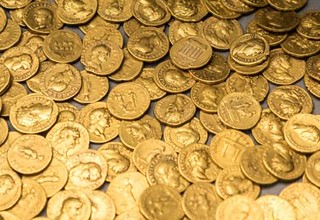 By the beginning of the fourth century, the Roman Empire had become a completely different economic reality from what it had been at the beginning of the first century. The denarius argenteus, the empire's monetary unit during the first two centuries, had virtually disappeared since the middle of the third century, having been replaced by the argenteus antoninianus and the argenteus aurelianianus, numerals of greater theoretical value, but of less and less real value.
By the beginning of the fourth century, the Roman Empire had become a completely different economic reality from what it had been at the beginning of the first century. The denarius argenteus, the empire's monetary unit during the first two centuries, had virtually disappeared since the middle of the third century, having been replaced by the argenteus antoninianus and the argenteus aurelianianus, numerals of greater theoretical value, but of less and less real value.
The public excesses in the civil and military budgets, the incessant bribes and gifts, the repeated tax increases, the growth of the state bureaucracy, and the continuous requisitions of goods and precious metals had exhausted the Roman economy to incredible levels. To cap this disastrous reality, inflation had risen from 0.7 percent per year in the first and second centuries to 35.0 percent per year in the late third and early fourth centuries, impoverishing all social strata of the empire by leaps and bounds.
To read the complete article, see:
Rome's Runaway Inflation: Currency Devaluation in the Fourth and Fifth Centuries
(https://mises.org/wire/romes-runaway-inflation-currency-devaluation-fourth-and-fifth-centuries)
For bibliophiles, Michael Niebruegge passed along this article about book care and cleaning. Thanks. -Editor
To remove dust, dirt, or grime, my best advice is to use a paper towel,
says James Fraser, manager of The Grolier Poetry Bookshop in Boston. Alternatively, you can opt to use a microfiber cloth to dust off books. This method should work when you want to clean old paperback and hardbound books.
1. Wipe down the whole book, cover to cover, being careful when you clean the book's pages.
2. If there are stubborn smudges and stains on the cover of the book, wet the paper towel or microfiber cloth with a little water and revisit those bits. Bear in the mind that books—particularly old books—can be fragile. Any attempt to fix past wrongs may end up damaging the book even more,
says Fraser.
To read the complete article, see:
Why You Should Always Put a Used Book in the Freezer Before Reading It
(https://www.wellandgood.com/how-to-clean-books/)
ABOUT THOSE COIN ADS IN COMIC BOOKS
Len Augsburger passed along this fun article from Heritage Auctions about those coin ads in comic books. Thanks. For those of us of a certain age, they were a part of growing up as collectors. -Editor
Comic books of the 1960s often had intriguing coin ads promising prime investment opportunities. Since Heritage Auctions is of course known for its staff of ace numismatists, we decided to show one an ad from Captain Atom #85 (Charlton, 1967 – see image of the full ad below) to get the scoop.
Barry Sandoval: David, I've often wondered about these coin ads in Silver Age comics. If I had been around in 1967 and seen this ad, should I have sent off for the "scarce steel wartime penny set," and would the investment have paid off? Or would I have been better off socking away high-grade copies of that month's comics?
David Stone: This is a typical scam offering of common generic coins hyped and represented as investment opportunities. You see similar offerings on television and junk mail today. Notice there are no specific grades assigned to the coins, and the choice of date-mintmark combination is usually left up to the advertiser. Of course, prices on everything have risen over the years, so even common coins in low grade would sell for more now than they did 55 years ago but, as an investment, they would be poor performers. The one exception might be the silver coins, which would rise in value with the price of silver, which is much higher in recent times than it was back then. That is just based on their bullion value, however. Their collector value is still minimal.
Sandoval: Now that you mention it, the ad does simply say "All coins grade good or better." Sort of like comic dealers in the Rocket's Blast Comicollector used to say! And I see from the grading definitions on our website that "Good ain't good" in the coin world either.
To read the complete article, see:
Coin Ads in Comics: Were These Good Deals?
(https://comics.ha.com/c/newsletter.zx?frame=no&id=6280#collector-d)
FEATURED WEBSITE: MPC FEST
This week's Featured Web Site is MPC Fest. The 2023 event will be held March 17-19.
The most important event for Military collectors! It's called the MPC Fest and it is held in Port Clinton, Ohio. Over 60 people with interests in all types of military numismatic collectibles will be there. There will be presentations, show and tell with items newly discovered, March Madness (a trivia contest with questions about military numismatics to determine the national championship collector), an auction, and more!

